













curatorial intent p.11
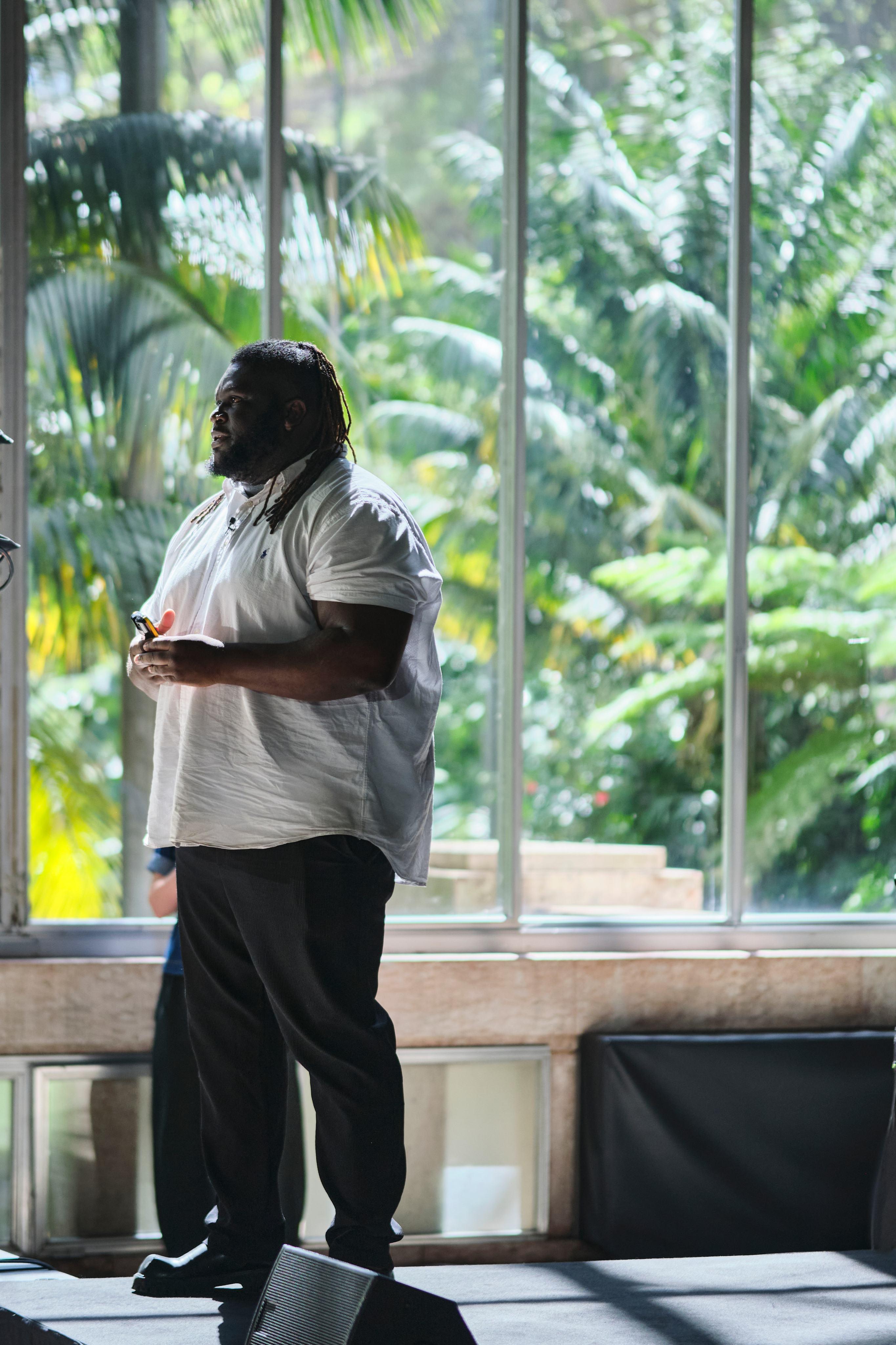



Voices and visions emerging themes p.41 looking ahead p.122
Future Days Festival is an annual, multi-day gathering that brings together creatives, purpose-driven organizations, and innovators. For more than two years, we’ve been writing this story together, not as a set of fixed ideas, but as futures-in-the-making.
Since the first Future Days, we’ve been discovering, sensing, and collectively imagining what futures might feel like through talks, workshops, prototypes, and field experiments.
We’ve met in labs, in reflections, in collaboration. We’ve left traces on Miro boards, in documents, prototypes, in conversations and in actions. This document is a continuation of that shared journey, a way to hold the chapter we just lived together: Future Days 2025.
What follows is not a traditional report; it’s a concise entry point into a living archive.
Think of it as a shared field note, a snapshot of collective sensing.
Future Days 2025 unfolded as interconnected conversations, provocations, experiments, and insights. We’re making some of that visible here - not to fix it in place, but to let it ripple, morph and regenerate.

We offer these pages as a trace of what we’ve been learning together. You’ll find:
● Reflections and questions from across the community (speakers, facilitators, participants).
● Signals and prototypes that surfaced during the gathering.
● Pointers into the broader archive for those who want to go deeper.
We designed for questions over answers and emergence over outcomes. The futures we need won’t arrive fully formed; they’ll be built through shared, iterative making.

What readers often ask first:
What is Future Days? A think tank, a platform, and a global community dedicated to making long-term thinking tangible, transformative, and real. Why this document? To surface what felt most alive in Future Days Festival 2025 and point you to the work. What changed? The conversations seeded new collaborations and reframed ongoing work.
Many voices shaped its form and content. Our role as curators has been to facilitate and not to define. To hold the space and not own it.
Throughout, you’ll find themes and thoughts that loop, intersect, and contradict. We invite you to navigate this report not linearly, but intuitively, like walking through a garden.
Most of all, we hope this archive feels like an invitation:
To keep questioning. To explore the archive, join the initiative or contribute a reflection. To keep imagining futures, not as destinations, but as relationships and ongoing practice.

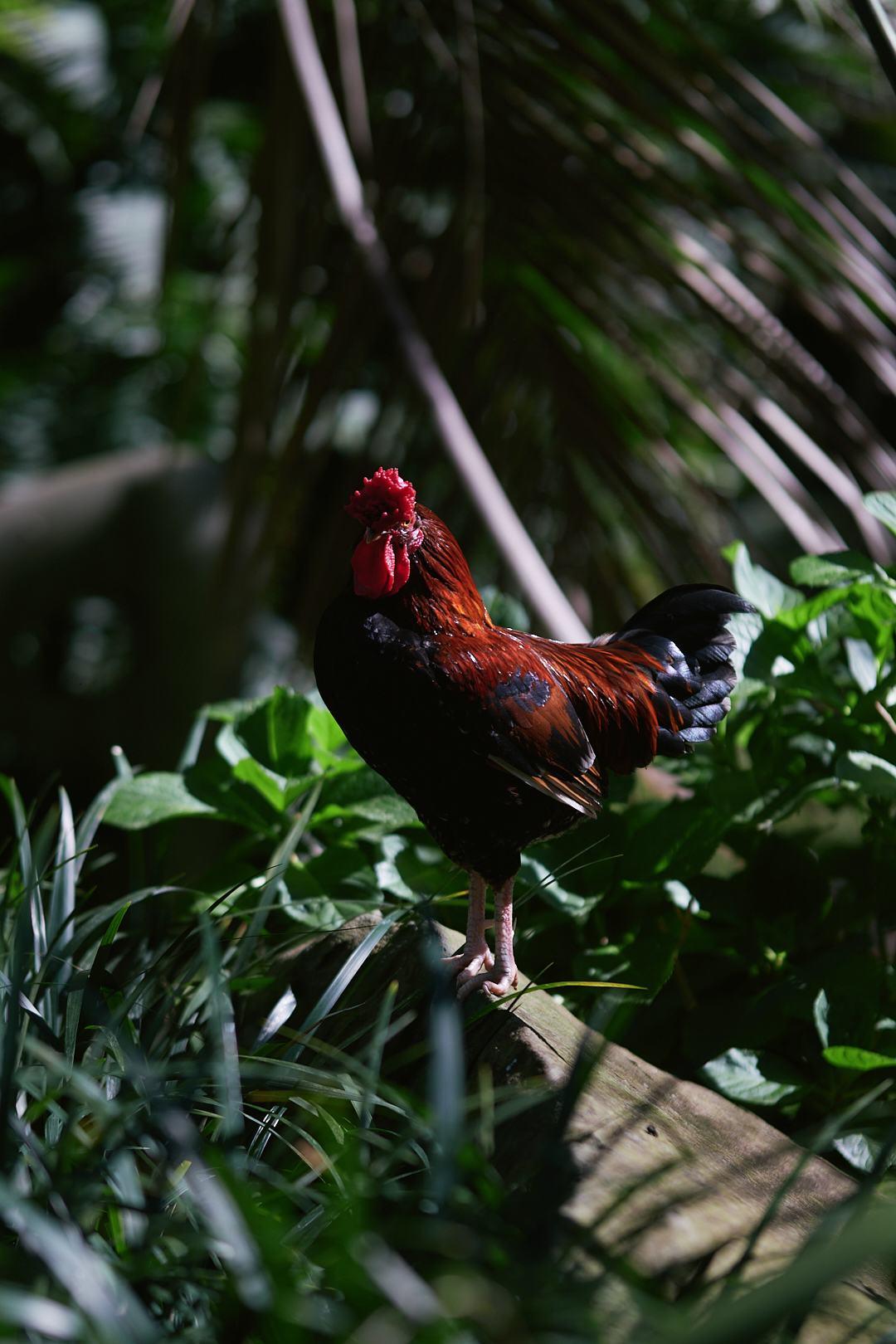
Future Days 2025 takes root inside a longer, unfolding narrative. Each edition builds on the one before it. In 2024, we uncovered something vital: we need to imagine more intertwined, interdependent, and embodied futures. Futures rooted in connection, not control. That realization shaped everything about this year’s curation.
We chose the theme “Towards Symbiotic Futures” as an open question.
● What does “symbiosis” mean when we speak of species, human and more-than-human?
● What does it mean to apply “symbiosis” in technology, when tools are designed to serve life rather than extract from it?
● In education, when learning systems nurture reciprocity rather than competition? In design, when aesthetics and ethics evolve together?
● In theory, when our frameworks embrace interdependence over dominance?
● In policy, when governance is shaped with, not just for, the communities and ecosystems it affects?
For us, this theme was an invitation to imagine how we might co-exist and co-evolve with each other, with our communities, and with the world.


We envisioned a world where nature, community, and technology are not separate silos, but symbiotic systems of care, co-creation, and responsibility.
Future Days 2024 mapped urban challenges and near-term innovation, grounded in Lisbon. It sketched the terrain of possibility. In 2025, after experiencing a total blackout just 2 days before the festival, we moved from not only envisioning, but to embodying. We asked:
What would it feel like to experience symbiosis in the space, the program, the people, the atmosphere itself too? This edition was deliberately less “conference” and more “ecosystem.”
That’s why we -->
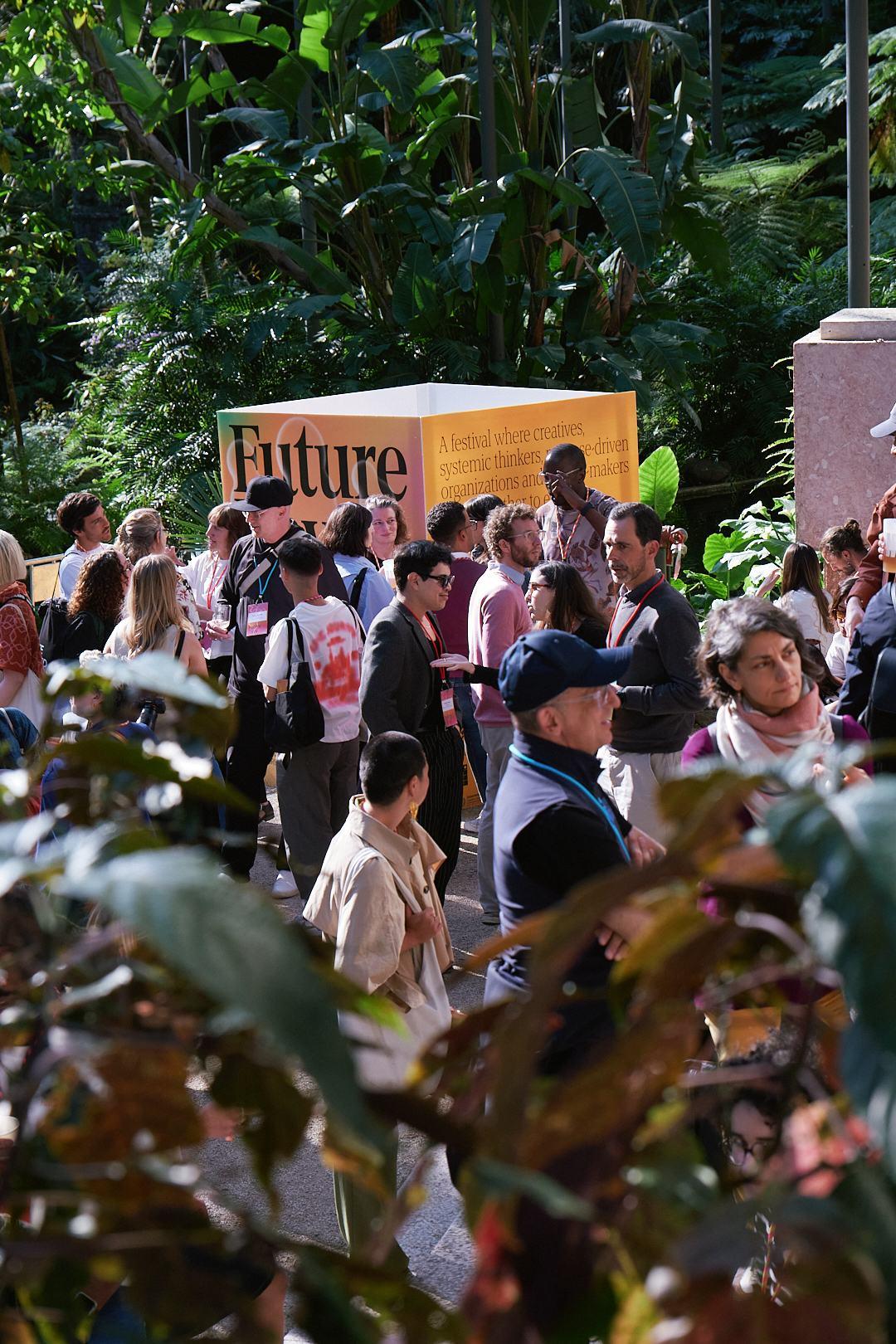

*
Expanded into the gardens of Estufa Fria, the historical greenhouse in the heart of Lisbon, to physically immerse ourselves in an ecology that holds both wildness and structure.

Chose black cork furniture, grounding, tactile and local, to remind us of nature’s texture.

*
Designed for slowness, porosity, and relationality, giving more space to linger, connect, and cocreate.

Added new formats: the Garden Gallery, (Un)conference spaces, and a closing party, blending speculation with storytelling, presence, pause and celebration.
We curated around five interconnected values that overlapped through themes and topics.
These threads shaped everything, from speaker selection to spatial design to the emotional cadence of the experience.
Collective intelligence
Urban resilience
Ethical tech integration
Symbiotic co-existence
Traditional knowledge
Our design philosophy emphasized ecology over efficiency. We didn’t seek to control the flow because we wanted to invite emergence. The program was layered with soft infrastructure: organic materials, modular spaces, and loose formats that could bend and stretch with participants’ needs.
Whether in a quiet conversation in the Garden Gallery or a provocation on the main stage, every moment was part of a shared inquiry:
What does it take to build symbiotic futures, not just in theory, but also in practice?

This report emerges from a fluid, collaborative, design-led process. It mirrors our curatorial intent prioritizing emergence over certainty, collective intelligence over individual expertise, and treating futures thinking as a continuous practice of becoming.
Months before the event, Future Days Knowledge Hub (the team dedicated to research and disseminate open knowledge to our community) convened in a series of online sessions to explore signals of change and co-create speculative narratives. These stories became provocations, visions of governance beyond the human, of metrics redefined by different geographical and cultural corners, of ancestral knowledge leading new regenerative models.
They were invitations to think otherwise.
During the festival itself, we collected insights in many forms: participatory labs storytelling spaces transcribed discussions public reflections open Miro boards a post-event community form
We listened. We read every comment, every provocation shared on LinkedIn after it, every hesitation voiced in passing. We gathered critique as carefully as inspiration.
Together with the Knowledge Hub and internal team, we clustered recurring threads, tensions, and patterns: not to reduce complexity, but to illuminate it. These clusters became the emergent themes of this report.
Throughout, our role has not been to define conclusions, but to hold space for pluralities. Our approach borrows from design, but it is not linear. We loop, diverge, pause, and return. We believe futures are imagined this way: iteratively, relationally, and with (a lot of) care.


A constellation of people who shaped the experience of Future Days 2025 through ideas, prototypes, conversations, installations, and imagination.


In this opening dialogue, partners reflected on collaboration, innovation, and the deeper soil from which symbiotic futures might grow.


In his talk “Autochthonous Design - An Optimisticist point of view over the future”, Rui Quinta took us from childhood memories to geological timelines, questioning the role of design in a world that might need less of us, and more of everything else.
In “Design for Longevity”, Sheng-Hung Lee explored how design and systems thinking can support inclusive aging, financial planning, and social innovation for longer-living societies.



In “Missing Archives, Missing Futures”, Lex Fefegha reflects on how innovation is defined and who gets to be remembered. Where rap becomes poetry and resistance, where Black British histories are made playable, and where AI is not a threat, but a collaborator.
In “Rehearsing the Not-Yet”, Gem Barton challenged us to reimagine education as a queer, speculative space of refusal, care, and radical ecological possibility.

In “Deep Time Dance”, Kira Xonorika shared her multidisciplinary practice — spanning AI, robotics, and Indigenous cosmologies — and previewed her newest film on creation and futurist mythologies.
In “Sensing into Each Other”, Monika Jiang read us a love letter to Future Days while guiding us through presence, movement, and listening — reattuning to the world and each other by hugging, smiling and sensing.


In “Futures of Gaia”, Sohail Inayatullah unfolded long-term world scenarios, inviting us to reflect on transformation, governance, and the deep-time futures of the planet.
In “Legacy by Design”, Inês Ayer explored how storytelling and visual communication can shape inclusive governance and youthled heritage movements.



In “Why We Should Be Optimistic About Our Digital Future”, Payal Arora offered a hopeful vision of how Gen Z in the Global South is shaping joyful, creative, activist digital cultures.
In “Systemic Transformation in Governance”, Simon Höher walked us through what he calls “glitches” — the surprising, strange, and sometimes illogical events that don’t fit our maps of progress, but might point to something deeper: a way out.


In the “Nature Consultation” Lab, the European Commission invited participants to explore river ecosystems as living stakeholders through sculpture, scientific storytelling, and ecological dialogue.
The UN Futures Lab hosted “Shaping Urban Futures”, a scenario-building session to imagine equitable, sustainable cities through collective foresight.
The UK Ministry of Justice challenged participants in “Justopia: Interrupted” to rethink justice systems through long-term visions and speculative models.
In “Is This the Time?”, the Copenhagen Institute for Futures Studies asked us to reimagine alternate histories and futures rooted in balance, memory, and coexistence.
The Lab “Continent of Play” by 21st Europe explored how can design and play can empower public imagination, influence policy, and contribute to the future of the European continent.




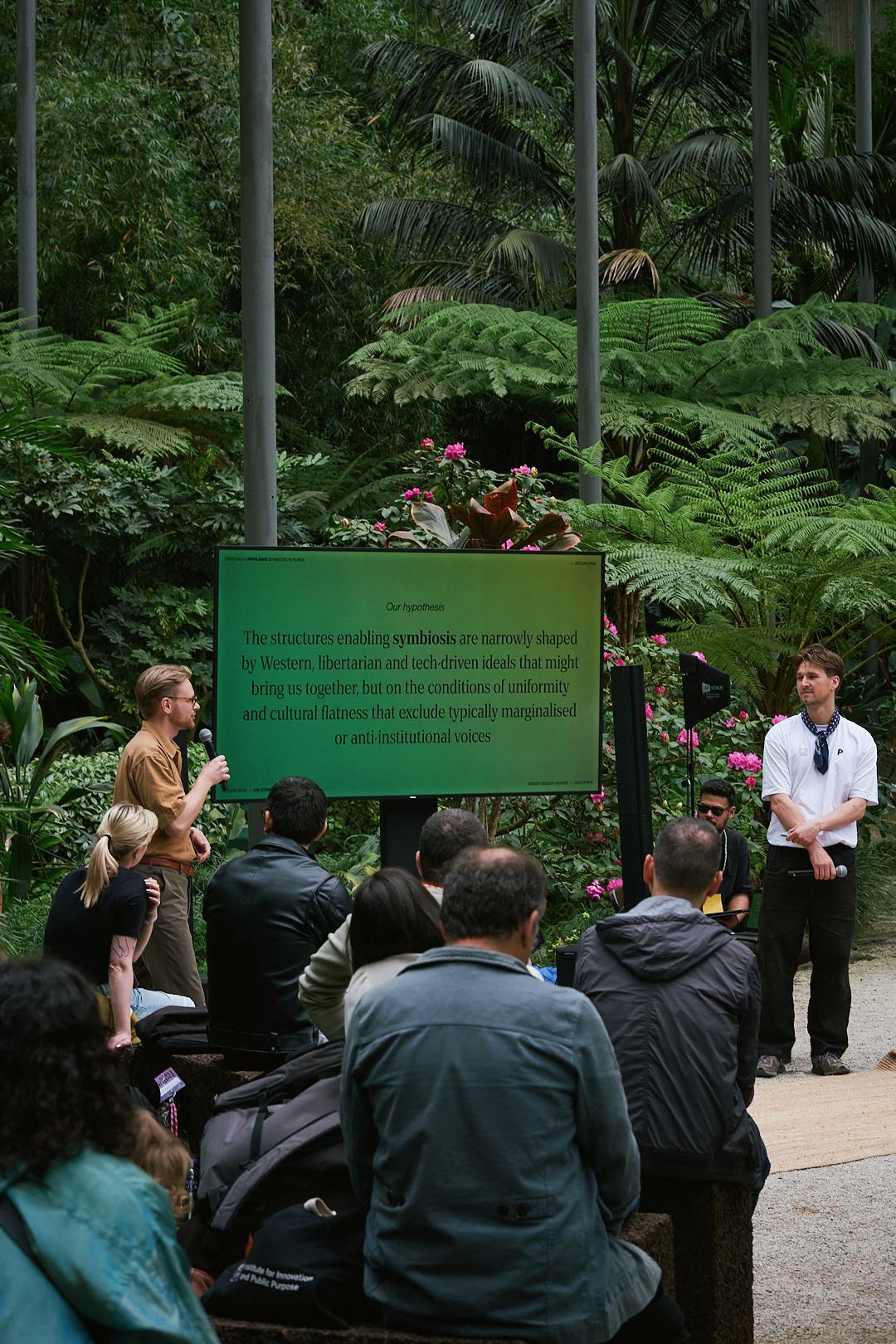




Anticipate + Danish Design Center
Anticipate + Danish Design Center led a hands-on zine-making session exploring power, imagination, and futures literacy.
ATÖLYE invited participants to explore how relational design and collective intelligence shape trust, innovation, and transformation.
Dark Matter Labs created a conversational podcast-style session hosted by Curiosity That Matters, opening futures access through storytelling and dialogue.

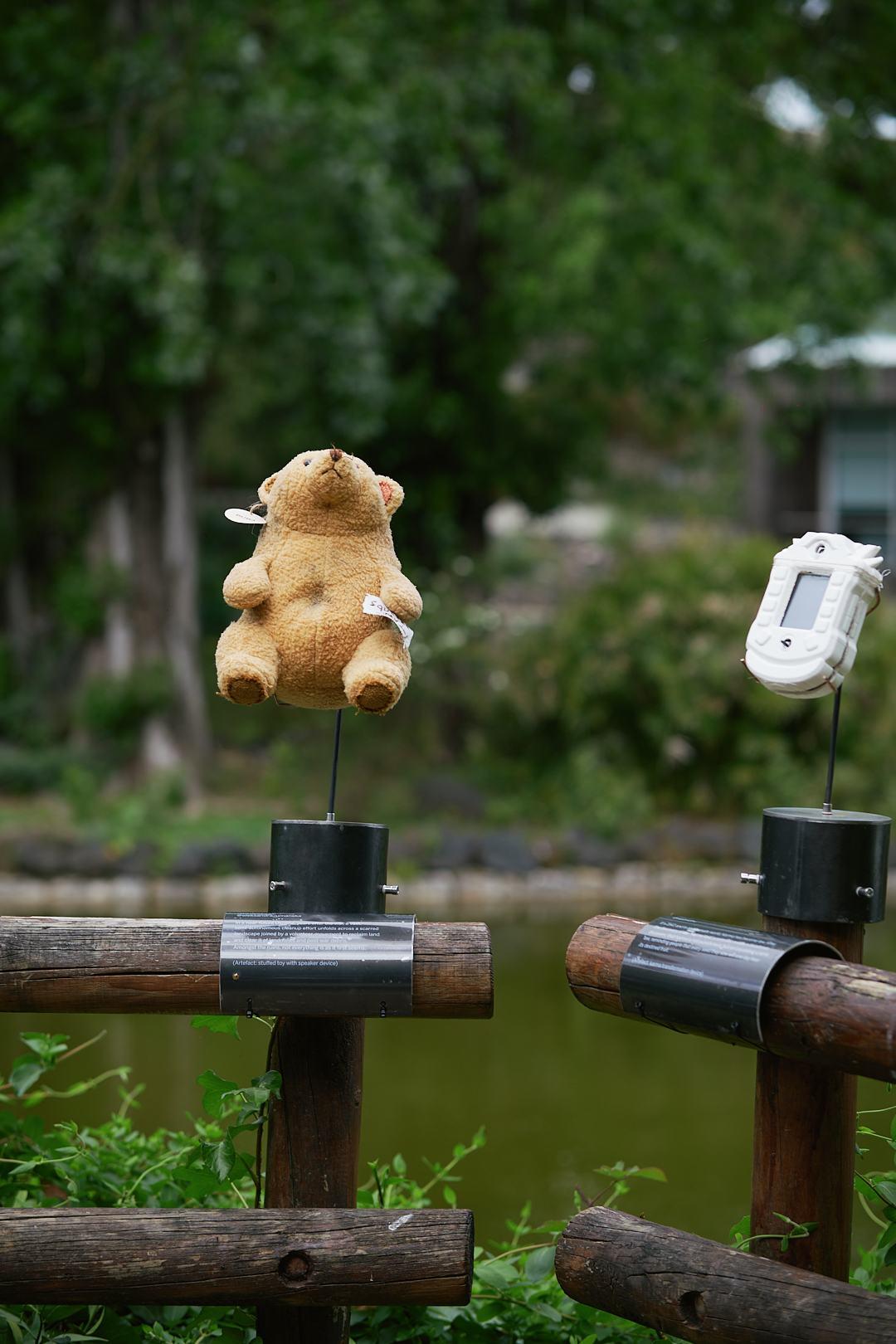
In “Blue Marble”, UNDP x UN Futures Lab explored multilateral futures through generative intelligence — bridging human and non-human knowledge to imagine regenerative cooperation.
“Nature’s Depot” by SuperFUTURES (RCA) presented speculative artefacts reflecting on trade, nature, and the design of future spatial systems.
In “Data Trees Metamorphosis”, le_Brimet + Gencork, with sound by Marcus Amadeus, created an immersive AI-powered installation that questioned the evolution of plant species and ecological time.
“Spectr[al] of Nature” by the European Commission envisioned policy-making where nature holds a voice, challenging the binary of human vs. environment.
In “Futures Omikuji”, the Future Design Lab (PwC Japan) offered a ritual-based foresight experience — inviting participants into poetic, embodied dialogues with uncertain futures.
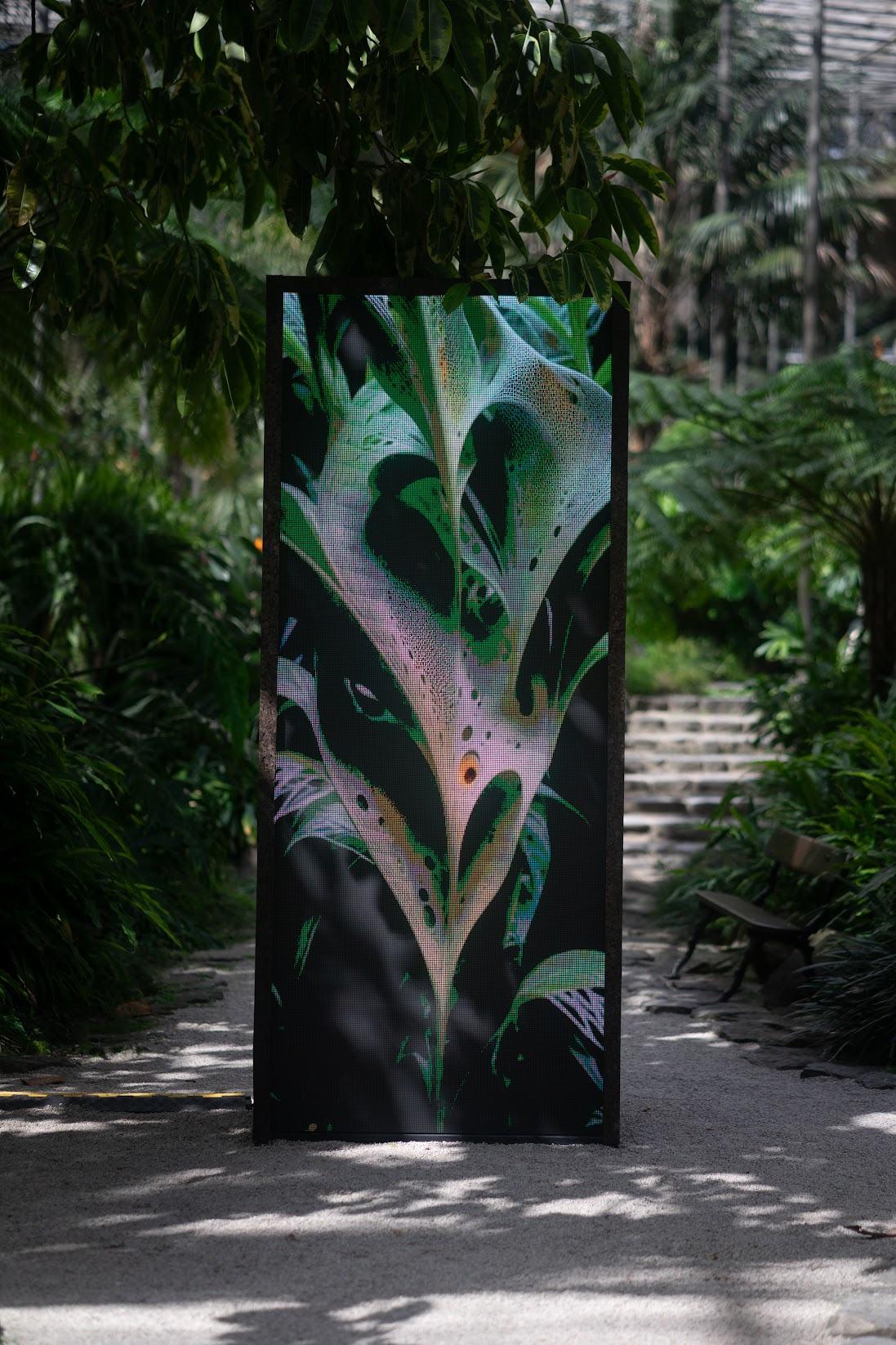


The Young Future Makers Fellowship Program by Future Days and CIFS in collaboration with MediaLab Bayern showcased:



“Past-Future Commons” by Brodie Weir, an archival inquiry into land rights and recommoning as speculative governance.
“Beyond the Circle” by Nanditha Krishna, a literary futures journey using asynchronous, self-guided tools.
“rOund table” by Poorvi Garag, a participatory design workshop on inclusive international development.
Future Days 2025 would not have been possible without the commitment, creativity, and care of many people. We thank the Future Days core team, who made this edition real, from curation to logistics, production to hospitality. We celebrate the Knowledge Hub, our braintrust and compass, whose members led the thematic research, identified key signals, hosted reflective sessions, and helped shape the content and tone of this entire report.
To the report contributors who participated in the sense-making of the 5 themes (all mentioned in the last chapter).
To the whole Future Days community: your voices mattered deeply. Whether through Miro boards, post-event reflections, social media posts, feedback forms, or conversations during and after the festival, your contributions helped us make sense of what was emerging.
What if we opened a digital space, not just to analyze what emerged during Future Days 2025, but to feel into it together? What would it mean to distill not only insights, but sensations, tensions, and shifts in perception? This chapter is less about synthesis in the traditional sense and more about reflection as a collective act. Less about what was said and more about what moved us.
After the event, the Knowledge Hub team (Irina Panovich, Elena Domenicucci, Giovanna Noronha, Paula Rydel, and Meri Sahade) returned to the raw material of our shared experience. Notes, comments, drawings, doubts, hesitations, dreams. They sat with it all, clustered it, felt it and asked new questions.
Then, they opened the process wider, to the community. To further reflection and to iteration. In this open field of inquiry, five emerging themes began to take shape, threading through one another in complementary patterns.

These chapters are authored by the different members of the Knowledge Hub. As analysts, storytellers, provocateurs, researchers, each one took the lead on a theme that called to them, reflecting on the data, community's insights, and also what had shifted inside them. The writing is deeply personal, and radically diverse in style and voice. Like the themes themselves, the texts are nonlinear, sometimes messy, sometimes clear, but always alive.
These are all glimpses into what Future Days 2025 may have activated in us, and what it might still become.

She speaks of storytelling as a collaborative, evolving process, of drafting narratives together, just as we experimented with in the making of this report.
Irina Panovich (Russian-American, based in Copenhagen)
What if changing how we think about the future requires first changing our relationship to time? Irina traces how Future Days 2025 revealed the possibilities and tensions of foresight work that embraces multiple temporal realities.

Paula Rydel (Polish, based in barcelona)
In a world obsessed with clarity, can sitting with uncertainty be a radical act? This theme emerged as a response to the rigid binaries that limit our imagination. Through the lens of layered identities and ambiguous futures, Meri proposes an invitation not to resolve contradictions, but to inhabit them
As centralized systems falter, we are learning that no single solution can sustain complex futures. Paula invites us to explore governance as something relational and regenerative, like tending a garden. What if futures were rooted in emotional resilience, care, and community collaboration, not control?
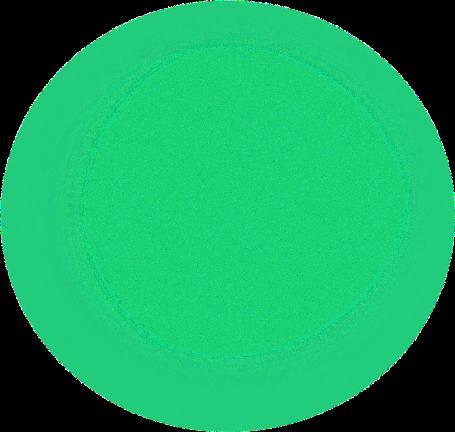
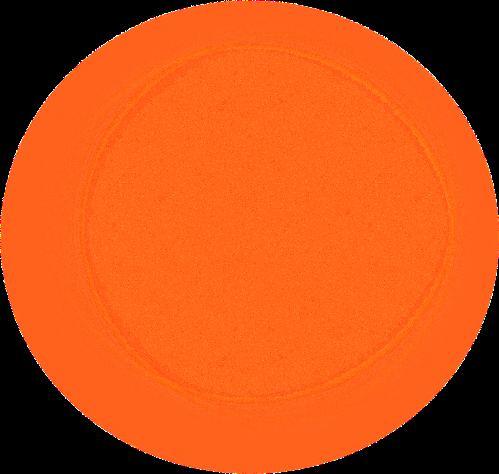
Paula Rydel & Irina Panovich
We are reaching the limits of the logic of "more." In a moment of planetary overshoot, this chapter explores the shift from extractive growth toward regenerative, cyclical, and interdependent futures. The duo, Paula and Irina, psychological work of letting go that lies between our current systems and regenerative visions, and the art of living within limits not as scarcity, but as deep abundance.
Elena Domenicucci (Italian, based in lisbon)
This chapter explores the oftenoverlooked spaces between systems: the fluid, permeable interfaces where exchange happens, transformation matures, and fresh forms of knowing are born. Rather than focusing on boundaries that divide, Elena invites us to consider interfaces as relational zones, dynamic, complex, and alive.
Giovanna Noronha (Brazilian, based in porto)
In an era marked by systemic fatigue and a crisis of truth, transparency becomes a paradigm for co-creation. As Gigi puts it, it’s about “inviting others to sit at the same table, even if it’s messy.” This chapter explores transparency as a practice of shared agency, reciprocity, and mutual accountability.

These themes are field notes from an ongoing inquiry, they loop and intersect. They critique and complement. You can read them in any order, or no order at all. We invite you to read with openness, with discomfort and with questions.

By Meri Sahade
There’s a certain restlessness in living between worlds, a sense of carrying multiple truths without letting any one of them define you completely. It can feel unsteady at times, but also alive, like standing in a river that’s always moving.
I come from Argentina, though my roots stretch across geographies. Part of my family arrived from Lebanon and Syria two generations ago, and I’ve lived in different countries throughout my life. That constant movement between cultures and contexts has made me fluent in ambiguity. Over time, I’ve also come to see this tension not as a flaw, but as a strength.
Binary thinking sometimes feels a bit masculine, a bit rigid, outcomeoriented, while another approach tends toward fluidity, ambiguity, and relationality. It was from this place that the “Beyond Binaries” theme emerged during and after Future Days 2025: a desire to explore futures that aren’t easily categorized, defined, or resolved.
We designed a festival that would not deliver answers, but generate better questions. That would not offer one single future, but open space for multiple, messy, coexisting ones. We read many attendees’ reflections, expressing Future Days had designed “more doubt than solutions.” And they were right. That was part of the curatorial intent.
Because in a world obsessed with clarity, sitting in uncertainty can be radical.
This chapter is just another invitation to reflect on how this sits with you. To consider how your own layered identities, contexts, and perspectives might inform how we imagine and design possibilities.
What if we refused to choose?
We’re conditioned to split the world into opposites: good/bad, north/ south, human/machine, right/wrong. These binaries run deep in our politics, education, planning, and even in how we talk about the future. But what if these very frameworks are part of the problem?
At Future Days, we asked:
● What if the futures we most need are the ones that don’t fit anywhere neatly?
● What if progress lies not in choosing sides, but in rejecting the premise of the binary altogether?
This wasn’t about indecision, it was about refusing to collapse complexity into oversimplified positions. We saw this in conversations where participants resisted being forced into pro/anti narratives and instead spoke from places of grief, history, and nuance.

That refusal to simplify what must remain complex is a form of resistance, and, I believe, a form of futurism.
Across installations, labs, and garden conversations, we explored futures grounded in environmental ethics, decentralized technologies, and kinship between human and more-than-human systems.
We didn’t design with rigid categories. Instead, we moved fluidly.
● At the CIFS Lab “Is This the Time?”, participants explored futures grounded in environmental ethics and decentralized technologies. Groups reimagined oil as either sacred or toxic, reframed time as a fluid construct, and created narratives of kinship between humans and morethan-human systems. Slower living, alternative rhythms, and temporal disobedience surfaced as acts of refusal.


● In the “Data Trees
Metamorphosis” installation by le_Brimet, Gencork and Marcus Amadeus, an AI trained on local plant species generated a multisensory, hybrid landscape (part physical, part digital) that dissolved the boundary between natural and synthetic, inviting visitors into a non-binary journey of sound, texture, and transformation.
● The “Futures Omikuji” ritual by PwC Japan drew from ancient fortune-telling practices, not to predict the future, but to provoke emotional engagement with possibility. Each slip was an invitation to hope, to reject, to let go.
● The “Blue Marble” project by UNDP proposed a multilateral system grounded in generative intelligence, not built on dominance or hierarchy, but on collaboration between human and non-human intelligences.
● In the “Spectr[al] of Nature” exhibition by the European Commission and Ingrid Mayrhofer, ecosystems were imagined as legal stakeholders. This simple reframing dissolved the binary between human and environment, asking what laws would look like if rivers, trees, or fungi had voice and vote.
In our own design practice at Future Days, we work the same way, less like building a fixed blueprint, more like tending a living ecosystem. Futures, like gardens, thrive on diversity, surprise, and interdependence.
Futures work, even the speculative kind, often reproduces the very binaries we aim to escape.

Moving beyond binaries also means recognizing that not everyone wants to, or can, let them go. For some, binaries bring clarity and safety.
“How do we also include those who need binaries to make sense of the world?”
greg sherwin, fd25 summary contributor and ambassador
We must also include those who need binaries to make sense of the world.
For me, this is where a multidisciplinary lens becomes most valuable: designing spaces where fluidity and structure, paradox and certainty, can coexist without one erasing the other.

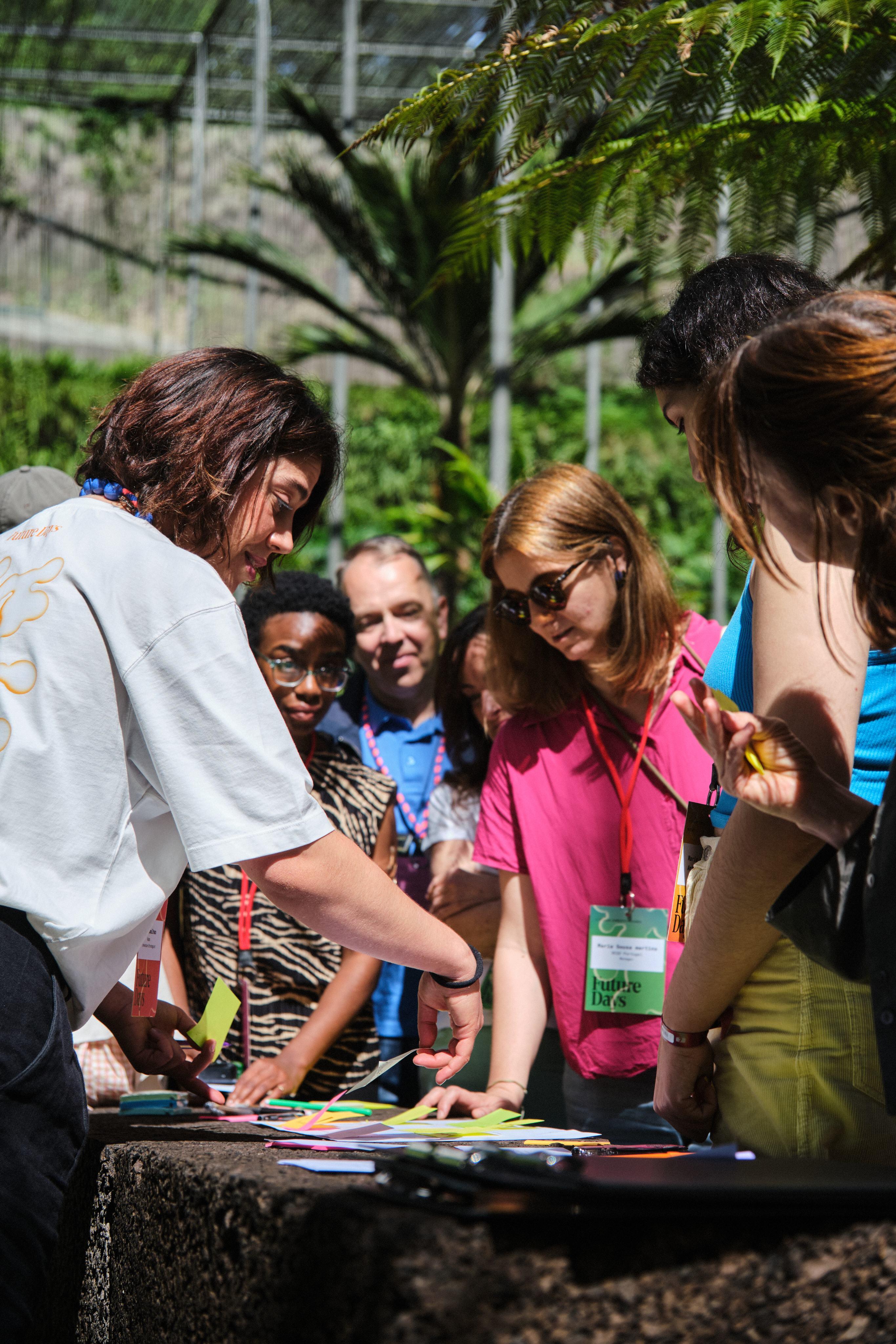
To move beyond binaries is to embrace the discomfort of not knowing.
It is to resist the seduction of easy answers and instead dwell in contradiction, complexity, and coexistence.
But holding this space is not simply an intellectual exercise, it is a practice, and a demanding one. In curating Future Days 2025, we learned that creating spaces free from the pull of binary thinking requires more than just rejecting categories. It also demands being radically transparent (even when at times can be uncomfortable), it means resisting the seduction of easy answers, being and inhabiting time and navigating cycles with care, and holding boundaries so that people feel safe enough to explore what feels uncertain.
This is the paradox: to invite people into ambiguity, you must also give them something to hold onto. For those who thrive on openness, that might be permission to wander without a map. For those who rely on structure, it might be clear rituals,

shared language, or moments of grounding that keep them from feeling lost.
Curating the in-between means designing for both, creating enough stability for the cautious, and enough looseness for the adventurous. It means treating futures work not as a stage for declaring one right vision, but as a commons where many visions can breathe together.
The futures we need most may be the ones we can’t yet name. They will not arrive neatly packaged or universally understood. They will be partial, layered, even contradictory. But they can still be deeply felt, deeply shared, and profoundly real.
To bring such futures into being, we have to slow down. We have to listen for the quieter voices, especially the ones that don’t fit the dominant narratives. We have to design for difference not by erasing the edges between perspectives, but by allowing them to touch without collapsing into sameness.
Future Days 2025 showed me that doubt is not the opposite of hope, it is its companion. In the liminal space between what is and what might be, hope and doubt hold each other in balance. If we can learn to trust that messy middle, to remain with what is unresolved without rushing to closure, we may find that the most radical futures emerge not from certainty, but from the courage to stand together in uncertainty.
Because the work of imagining futures is not only about what we see ahead.
It is about how we hold each other while we look.
By Irina Panovich
Water drips from ancient ferns in Lisbon's Estufa Fria. I sit crosslegged on black cork furniture, sketching futures in a handmade zine while conversations unfold around me: unhurried, intertwined, alive. The sound marks time differently than any clock.
I come to this reflection carrying layered relationships with time. I work with ethical protocols that honor different ways of knowing while exploring how communities organize across time through emergent networks. These experiences have inevitably shaped what I noticed and amplified in this weaving of voices from Future Days - a lens that privileges emergence over certainty, networks over hierarchies.
I invite you to sit with the questions that emerged rather than seeking definitive answers.
In those gardens, I encountered a deeper provocation:
What if changing how we think about the future requires first changing our relationship to time itself?
We've become accustomed to thinking of time as strapped to our wrists, a repetitive rhythm of the ticking clock, linear progressions, and quantitative measurements. But time is also made up of relationships, experienced as a woven fabric enmeshed with ecological and more than human processes.
At Future Days 2025, the tension between measured time and lived time in place became visible. Across keynotes, unconferences, art installations, and guided meditations in Lisbon's botanical gardens, a different understanding of foresight practice emerged.

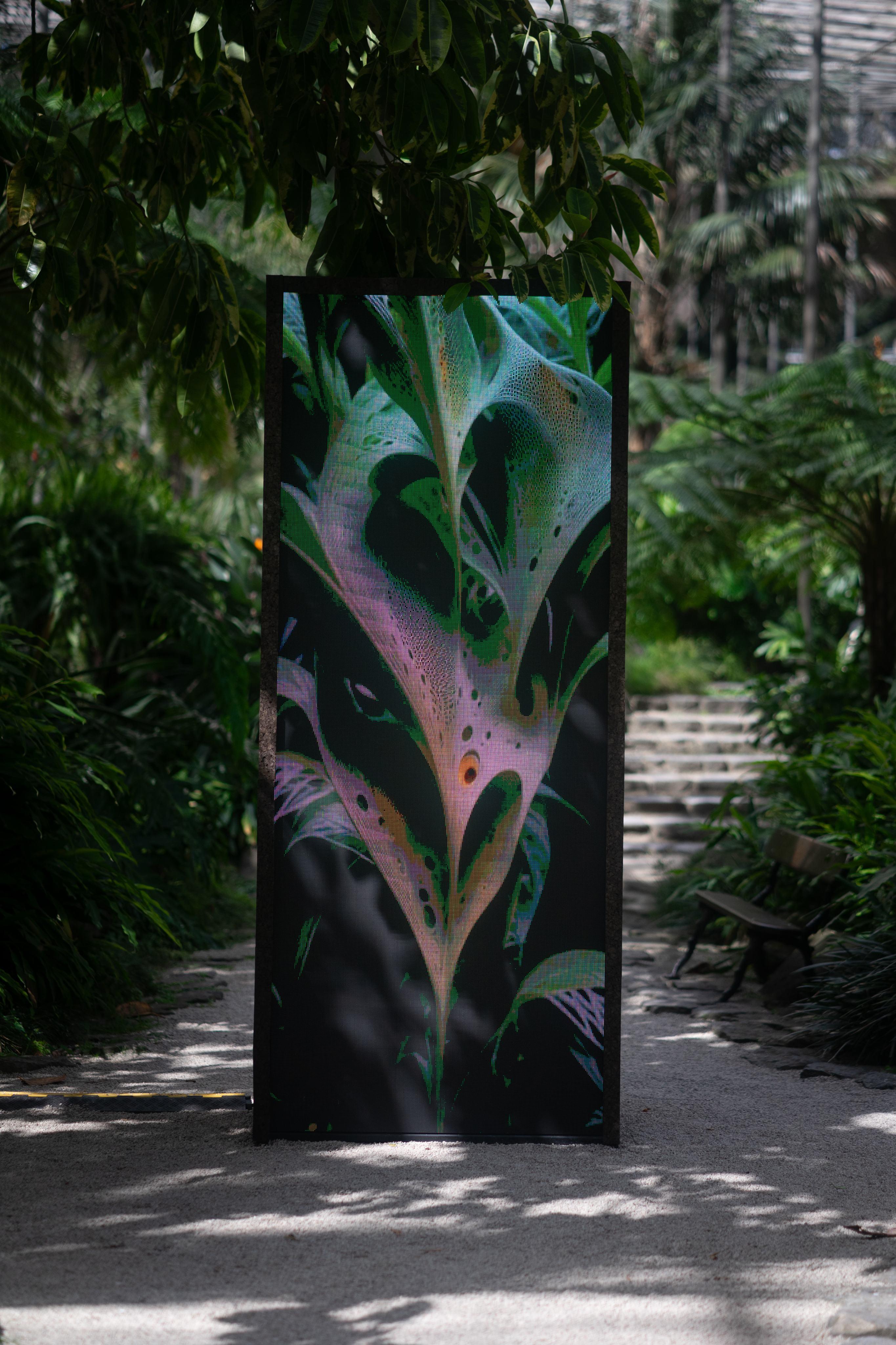
→ Foresight in practice: inhabiting time
The gathering became an experiment in inhabiting time differently, focusing less on predicting the future and more on expanding our relationship with time.
The power of Future Days 2025 lived not only in the keynote speeches and immersive workshops, but also in its quiet intervals. The curation of space invited moments of reflection where new understanding could take root. This article traces how the gathering became an experiment in inhabiting time differently, focusing less on predicting the future and more on expanding our relationship with time.
Three patterns emerged:
● Temporal presence - staying with current complexity while cultivating imaginative capacity.
● The politics of imaginationwhose temporal experiences get archived directly shapes which futures become thinkable.
● Spatial dimensions of timechanging our relationship with time requires changing where thinking happens.
Foresight as a discipline has been about constructing meaning from our relationship with time, extrapolating the past's probability into the future's possibilities. When I think of foresight practice, trend analysis, scenario planning, and planning horizons come to mind first. They have provided necessary structure and analytical rigor - essential tools for logistics, risk management, effective disaster responses and anticipation. Yet, in a transition where we are experiencing a re-entangling of the world and where old frameworks bring us closer to the edge of default lines, we need to either "become symbiotic, or collapse" - as Sohail Inayatullah said during his keynote, setting the stakes for everything that followed.
“We need to either become symbiotic, or collapse”
Inayatullah S.(2025).“fUTURES OF GAIA” [Video].
● What if this transition requires more than refining existing parameters?
● What if foresight was extended to create immersive spaces where people can feel, imagine and embody different temporalities?
● What if foresight's value was about expanding our capacity to sit with uncertainty today?
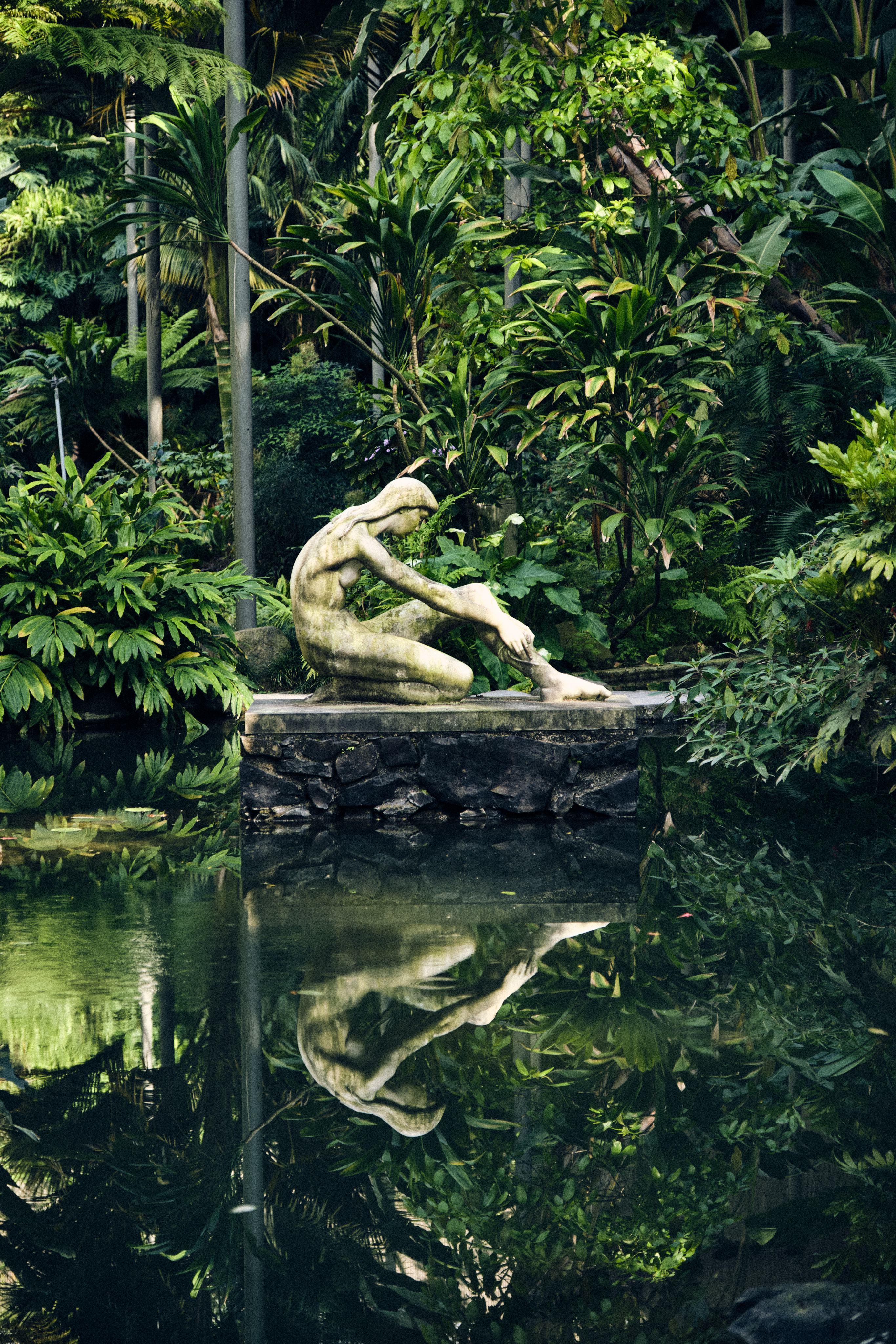
At Future Days, in conversation with foresight experts and practitioners from many other disciplines - human rights activists, software engineers, policy designers, artists, technologists, economists, students - I witnessed an increasing emphasis on engaging future visions with current political realities.
During the unconference sessions, small groups clustered around tables, voices getting more animated as they spoke of the need to stay in relationship with humanity, to stay with the trouble. They emphasized the need for new language, narratives, metaphors, somatic and embodied practices to create enabling conditions for change within and outside of institutions.
In her book Staying with the Trouble: Making Kin in the Chthulucene, Donna Haraway defines staying with the trouble as being fully present, honoring the interconnectedness with the fluid "configurations of places, times, matters and meanings" (*1). But staying with the trouble is harder than it sounds.
When we slow down, we see things differently. From this vantage point, sensing the future while holding space to understand today's geopolitical cruelty can prompt deeper reflections on the crises that plague us. As Simon Höher points out: "We have to go further than the "double diamond" (*2), we mustn't narrow down to "silver bullets". We have to create enabling conditions so that we have possibilities to choose.
(*1) Haraway, D. J. (2016). Staying with the trouble: Making kin in the Chthulucene. Duke University Press. (*2) Höher, S. (2025). systemic transformation in governance [Video].
Foresight in practice: inhabiting time
When our modern technology and rational methods for seeking answers have subdued our instinct to look beyond the ant mill of late-stage capitalism, staying with the trouble requires mindfulness and slowing down.
We validate historical accounts by finding recurring patterns, which become accepted truth.
When did we start expecting the future to justify itself with the same certainty we demand from the past?
Why do we reduce tomorrow to the computational aesthetics of prediction models and algorithmic certainty?
Rob Hopkins reveals in How to Fall in Love with the Future (*3) that our brains activate identical neural networks for both memory and imagination - making memory essential to envisioning any future. This neurological reality becomes deeply problematic when predictive systems have archived only one way of being in time.
(*3) Hopkins, R. (2025). how to fall in love with the future: a time traveller’s guide to changing the world. Chelsea Green Publishing.

Our capacity to imagine futures depends on our stored memories. Erasing certain experiences from collective archives directly damages our ability to conceive different tomorrows.
Lex Fefegha's insight that "Missing Archives create missing Futures" (*4) revealed how archives are more than storage systems. They're the scaffolding for our imagination. When voices are absent from our records, we misunderstand the past and constrain which futures seem thinkable. The archive becomes a prophecy. AI systems trained on biased data project distorted futures that reinforce existing exclusions.
The Copenhagen Institute for Futures Studies' "pasts cone" (*5) methodology - presented in their workshop on alternative historiesacknowledges that our foresight apparatus has been constructed from a singular way of being in time.
Rather than treating the past as a fixed foundation for extrapolation, it recognizes multiple pasts: suppressed histories, alternative timelines, marginalized temporal experiences that conventional foresight renders invisible. Here, prediction's "objectivity" reveals itself as a series of political choices about whose temporal experience counts as real.
This opens pathways to what Simon Höher calls "unthinkable futures" - possibilities that emerge when we step outside dominant temporal frameworks. Kira Xonorika's "Deep Time Dance" film (*6), screened during the festival, illustrates this possibility through a Futurist-Guaraní, Two-Spirit perspective that narrates creation through the hummingbird who shaped the world.
(*4) Fefegha, L. (2025). Missing archives, missing futures [Video]. (*5) CIFS. (2025). "Is this the time". Lab at Future Days 2025.
(*6) Xonorika, Kira [@xonorika] (2024). Deep Time Dance.

Barton, G. (2025). Rehearsing the Not-yet [Video].
Language creates futures. Words shape what becomes thinkable and achievable. New terms enable us to conceptualize and implement previously unthinkable solutions. This makes language a crucial instrument for gaining agency over our circumstances and expanding our sense of possibility.
In Beyond the Circle: Triangle, Stories and Socio-technical Futures, Nanditha Krishna argues that literary thinking and fictions offer a "counterweight to a world saturated with algorithmic logic." Through weaving new stories and exploring alternatives to dominant narratives, we can expand imagination and sharpen our ethical lens. Yet expanding imagination inevitably confronts a more uncomfortable question.

Whose tomorrow?
Whose imagination is included and whose is rendered invisible?
When Ramla Anshur (attendee at Future Days) intervened during the Dark Matter Labs un-conference, she pierced through the comfortable abstraction: "the violence many face while trying to imagine just futures…communities targeted for activism, or paralyzed by survival."
As we cultivated "temporal presence" in Lisbon's gardens, communities in Palestine, Congo, and Sudan were experiencing time as immediate survival. The weight of bombs. Children counting days without food or clean water. Their temporal reality, unjustly, is about enduring the present long enough to see tomorrow.
This absence was structural. The conditions enabling leisurely reflection exclude those whose temporal experience might most challenge our frameworks. Economic security. Physical safety. Visa access. When imagination becomes labor, only those who can afford it shape which futures become thinkable.



We are designed to sync with the natural world. Our internal rhythms respond to environmental cues. By tuning into these cycles, we can experience time as a connection rather than constraint. Time takes on a shape in space. This understanding shaped Future Days' curation by applying foresight practice in action:
● The ANTICIPATE and Danish Design Center zine-making session created physical artifacts as "prototypes" of future scenarios.
● PwC Japan's "Futures Omikuji" installation allowed visitors to engage with possibilities personally - pulling paper fortunes that sparked unexpected conversations.
● The Specter[al]s of Nature (*7) , part of the European Commission's SciArt program NaturArchy, turned art into a policy stakeholder, moving creative work from museum walls into civic imagination around the depleting great lakes.
As Future Days curator Meri Sahade writes:


Foresight in practice: inhabiting time
"We curated this experience as a living system where space, material, people, and intention created an environment that could be inhabited."
These were interfaces; ways to engage with complexity that bypass the analytical mind's tendency to reduce everything to manageable categories.
This reflects Gem Barton's pedagogical method from superFUTURES (*8), a researchled speculative spatial design unit at the Royal College of Art, rooted in queer theory, experimental realism, and her own coined concept of speculative spatial design. Instead of training people to navigate predetermined futures, she encourages students to engage with "the layered, conflicting, co-existing" - "to sit with uncertainty without endpoints." She's teaching people to exist differently within time and space, transcending "practicality, which is a colonial demand rooted in the logics of Western science."
By the final day, we were moving through the "lived, navigated and felt space" placing it at the center of “how we imagine, design and rehearse the world to come". A different relationship to time emerged. It took shape in space, moving beyond scheduled sessions into slower rhythms of attention and presence. The "glitches" proposed by Simon Höher - unplanned moments between sessions, conversations in corners, and unexpected pollination of ideas across workshops - might be where different temporalities were sprouting. As Gem Barton says, these are places to "dwell in the margins" and explore the inbetween where "imagination really thrives".
(*7) European Commission. (n.d.). Spectr[al]s of nature. Science Art Society.
(*8) Barton, G. (2025). superFUTURES, Royal College of art, london, UK
The patterns that emerged at Future Days suggest foresight practice might need to work with multiple approaches to time at once. Data-driven scenario planning remains essential for institutional decisionmaking. But alongside these established methods, practitioners are experimenting with creating spaces where bodies feel different rhythms, where Indigenous cosmologies inform policy processes, where survival temporalities shape strategic planning.
The challenge is about expanding where thinking happens. Conventional futures work struggles to include certain ways of experiencing time. It's not because they're inherently unknowable, but because accessing them conflicts with foresight practice's usual conditions.


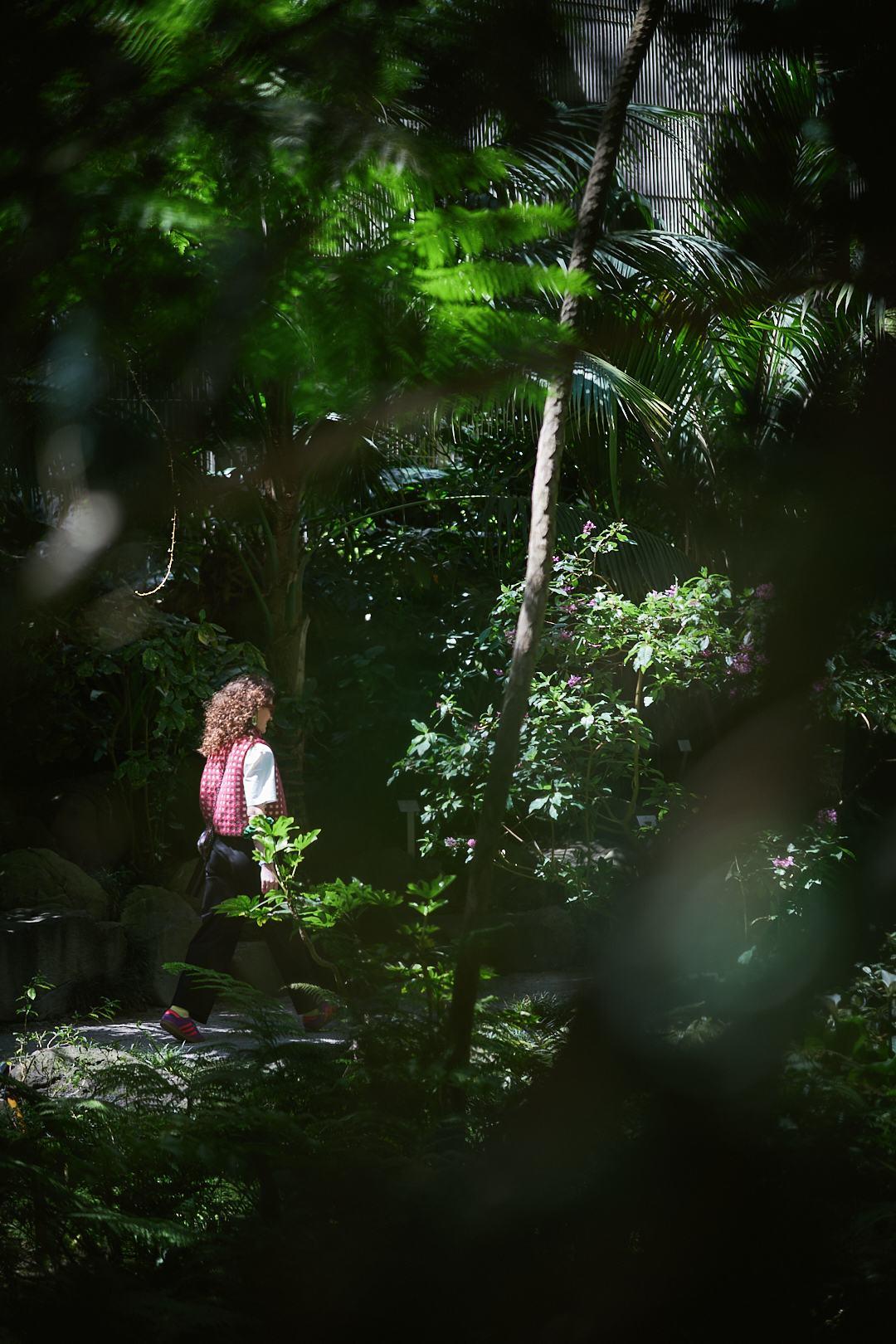
The practitioner working from this understanding becomes skilled at moving between temporal modes. They learn when prediction serves and when presence matters more. They discover that changing how we relate to time happens through accumulated small choices about where thinking takes place and whose temporal experiences get centered.
This is where the real practice lives - in the gaps between conference room efficiency and garden reflection, between datadriven analysis and imagination's need to wander, inherited frameworks and the ones we're still learning to inhabit.
→ Foresight in practice: inhabiting time
The becomespractitioner skilled at creating hybrid spaces where both the clock's urgency and time's deeper currents can breathe together. →
They discover that changing how we relate to time means changing where we think.

(This reflection is part of the Future Days 2025 collective summary, which documents the insights, experiments, and emergent themes from this year's gathering "Towards Symbiotic Futures.")
By Paula Rydel
“I'm a garden, you are a garden, we are a garden”
Kira Xonorika
At a time when dominant systems show their limits and consequences, we are coming to understand that future-making is sustained not through singular solutions, but through ecosystem networks rooted in care, interdependence, and shared responsibility.
This chapter invites us to explore: What if governance was more like gardening - nurturing adaptive, relational systems rather than enforcing top-down control? What futures become possible when we prioritize deep communities, emotional resilience, and collaborative world-building over control and prediction? Emerging from a growing disillusionment with centralized and extractive structures, this theme invites us to imagine non-utopian futures grounded in deep connections and relational forms of collaboration.
Our goal in the Knowledge Hub is to provoke, to imagine, to explore.
We are not owners of these ideas, but we are participants - engaging with complexity, holding space for multiple voices, and committed to learning through dialogue and uncertainty. This chapter is not a roadmap. It’s more like an invitation - a sketch of questions that are unfinished, searching, and open to transformation.
I write this chapter not as an expert, but as a companion in this shared process - listening, analyzing, and weaving together threads of thoughts, tensions, and hopes shaped by many voices. I’m also aware that I bring here my own biases: shaped by my background, my privileges, my constant curiosity, my optimism in action yet often pessimism in thinking, and narratives I have absorbed over time.
How we become together in a fragile world
Not through control. Not through prediction. But through quiet, attentive care: for relationships, for places, for rhythms, and for uncertainties.
Care resists easy definition. It moves through many forms: as practice, as work, as affects and affections, as virtue, as ethics. But always, it is relational. Situational. Full of tensions and inequalitiesnot ideal, but essential.
The ecosystem of care invites us into a landscape where futures are not designed from above, but grow through grounded efforts - from many places, through many hands. It speaks of relational care practices, where governance resembles gardening: cultivating conditions for adaptation, recognizing interdependence, and abandoning the myth of a single, universal solution.


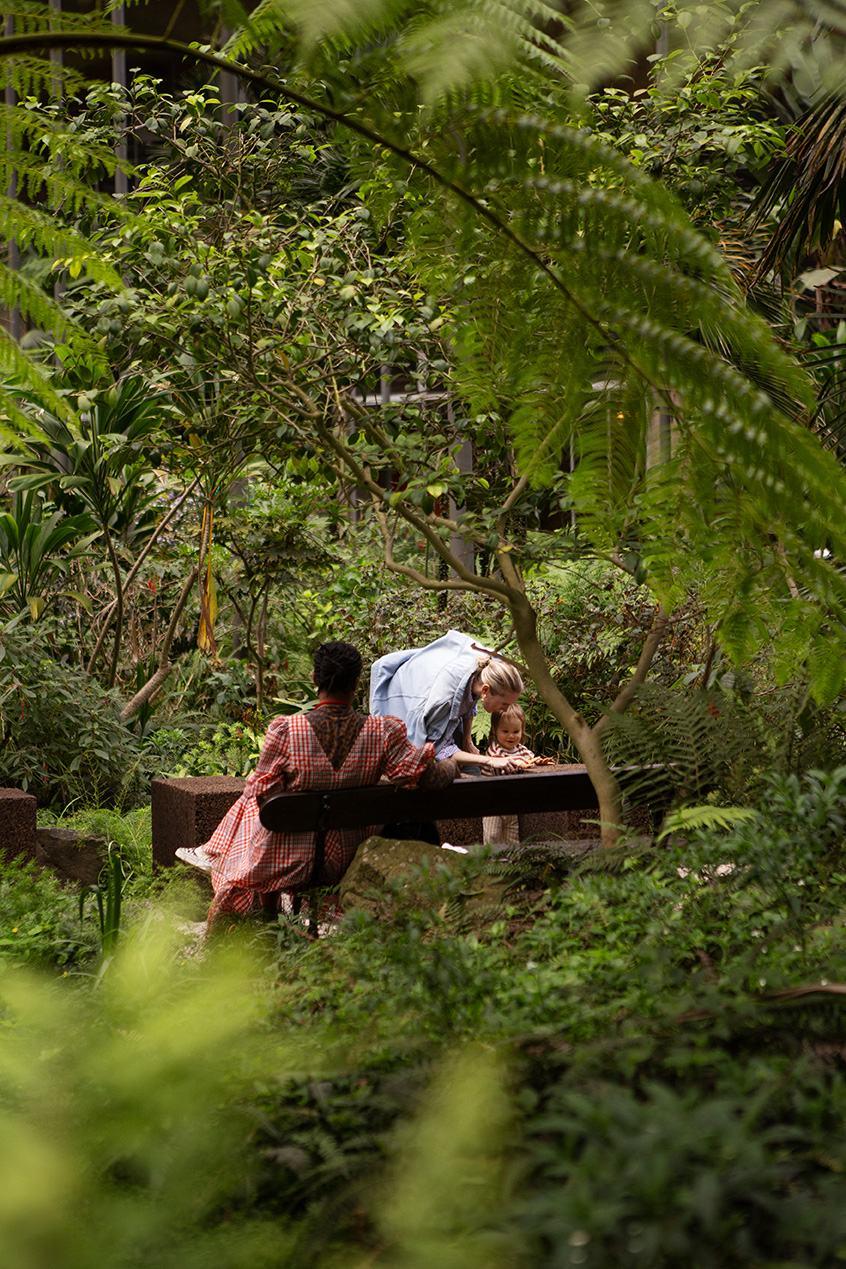

To care means to notice, to stay with what is unfinished, messy, unresolved - not as failure, but as a way of being.
“Truly new/interesting/worthwhile futures aren’t built from the center.”
Simon Höher
At Future Days, within this emerging theme, we observe polycentric, distributed innovations, peer communities, and portfolios of solutions interweaving across different contexts. Each of these signals reveals a different dimension of what an ecosystem of care can be. I see them as layers that together create a living, entangled process of change: in ways of thinking, in tools for action, in support structures, and in the building of relationships.
Within the ecosystem of care, governance begins to shift - from centralized planning toward more organic gardening. This signal marks a shift from control to cultivation. Just as gardening requires patience, responsiveness, and attention, an ecosystem of care focuses on enabling conditions rather than engineering outcomes. It facilitates ecosystems in which different forms of life and coexistence can thrive. It is not merely a change of tools, but a deep rethinking of what it means to act in a world full of interdependencies. We saw a glimpse of this during Future Days in Data Trees Metamorphosis by le_Brimet and Gencork. Using AI trained on local plant species, it imagined how life - biological and digital - might evolve in response to ecological change. Rather than offering answers, it invited a space of speculative coexistence - a quiet act of letting go, making space for what might emerge.
Rooted more in the ethos of permaculture, with its wholesystems thinking, than in the logic of conventional gardening, governance as gardening requires deep attentiveness - to context, to locality, to natural cycles, to understanding what grows on its own, what needs support, and what must be pruned or simply left alone. It also calls for an acceptance of unpredictability. Governance, in this sense, becomes a practice of relational care, not control: accompanying processes, not imposing them. It also raises the questions of time, of pace, of letting go of the logic of immediate results in favor of long, often invisible ripening of change.
We see initiatives where people come together to steward places: through commons-based housing initiatives, collective land stewardship projects, grassroots climate adaptation efforts, and more. What they share is not a model to be replicated, but the practice of governance as mutual care - not through resource management, but through nurturing relationships.
This is an invitation to imagine futures shaped by a movement that is alive, imperfect, yet full of possibilities. Creating connections before delivering content becomes here not just a principle, but a living practice. We experienced this shift firsthand at Future Days, where the curation reflected this in its very design - in its pacing, its multiplicity of voices, its refusal to rush toward solutions.
As one participant noted:
“FD25 reminded me that true power lies in connection and embracing the unknown. We don’t need to have all the answers. What matters is being open to what is unclear and trusting in the strength of community.”
Julian lopes, future days attendee
This was especially embodied in the session by Monika Jiang, which invited us into quiet presencereconnecting with ourselves, with each other, and with the world. It wasn’t just a meditative exercise, but a subtle form of governance as gardening: holding space without forcing direction, creating conditions for grounded emergence. These moments didn’t prescribe outcomes - they allowed something to take root.
Evolving practices over a fixed set of instructions
Just as thriving gardens depend on diversity, timing, and attentive care, transformative systems also flourish when they draw on multiple, interwoven approaches that respond to complexity rather than reduce it.
Relying on a single, universal solution, the myth of the silver bullet, risks oversimplifying challenges that demand nuance. The growing turn toward plural, adaptive strategies signals a deeper shift: one that embraces experimentation and lets go of the comfort of tidy, singular narratives.
This shift is less about finding final answers than about cultivating an ongoing practice of learning; navigating between plurality and coherence, shaping spaces that remain open to difference yet resilient enough not to dissolve into confusion.
A portfolio of solutions, then, is not a rigid set of instructions but a living collection of evolving practices. It is the capacity to engage in dialogue, share responsibility, and discern which paths serve the common good and which need revision.
Pluralism and networked intelligence are not optional addons; they are essential layers of readiness for futures grounded in care.
Peer community as a vital support system for an 'Odd Bird' profession
Beneath the networks we weave lies something essential: emotional and professional dimensions of care that quietly holds everything together. Peer communities function as living systems of support, especially for those working in emerging, misunderstood, or “in-between” roles.


Writing about care can easily slip into romanticization - the tendency to frame it as something inherently good: a way of holding relationships, a hopeful path toward futures less rooted in extractivism and exclusion, and more in coexistence and collaboration.

But care is not only a soft narrative. It is also often invisible labor, emotional and physical effort, and time - time that someone has to find, often someone who has the least of it. While the metaphor of gardening sounds comforting, it demands real, everyday attention and responsibility. If we fail to see who carries that effort and under what conditions, we risk recreating old hierarchies just dressed in the language of care. And when care becomes a systemic expectation rather than an act of free choice and sensitivity, it loses its relational meaning and can turn into a strained, overburdened emotional infrastructure.
These dynamics also shape how we approach a portfolio of solutions, which is not just a collection of practices, but a careful process of coordination, of negotiating responsibility, of balancing multiple paths. Celebrating plurality may sound inclusive, but it can also blur tensions and unintentionally exclude those who do not fit dominant care narratives. Multiplicity demands critical awareness: who is being heard, and who still remains at the margins? Even the most open spaces can carry invisible conditions, shaping how we speak, what we share, how we express our “self.”
Care without attentiveness can unintentionally reinforce what it seeks to heal. And even spaces that seem inclusive may reproduce subtle forms of exclusion when unexamined norms shape who feels at home. This reveals a gap between intent and embodied practice: care alone does not guarantee equity.




Co-authored by Paula Rydel & Irina Panovich
For decades, "more" has meant "better." In 2025, Earth Overshoot Day falls on July 24th - meaning that by mid-summer humanity will have consumed all the resources our planet can regenerate in an entire year. We'll spend the remaining months drawing from future generations' reserves, degrading ecosystems faster than they can regenerate. This planetary overshoot reveals an ecological emergency and a deeper systems breakdown that calls for radical reimagining of how we live, relate, and cultivate shared futures.
We've grown skilled at describing the world we want: circular economies, community ownership, economic democracy. But there's a crucial distinction between sustainability - maintaining existing systems more efficiently - and regeneration - creating conditions for life to flourish. At Future Days 2025, this difference became central to understanding why so many well-intentioned efforts fail.
“Traditional systems are no longer keeping up with the complexity of today's interconnected crises: from climate collapse to cultural fragmentation”
ATÖLYE Un-conference
Between our current systems and regenerative visions lies a canyon we rarely acknowledge: the profound psychological work of letting go. This emerged as the unspoken challenge beneath many conversations about shifting from extractive, growth-driven logics toward truly regenerative practices.
This chapter explores a shift rooted in natural cycles, interdependence, and grief. This is about deep transformation, drawing on ancestral and ecological knowledge, that understands change not as disruption, nor endings as collapse, but as life’s ongoing rhythm.
“We are shifting from egosystems to ecosystems”
Quote from atölye at future days 2025



organic, rooted in nature's metaphors, and accepting of life's cycles and endings.
This perspective invites us to reframe growth not as endless linear expansion, but as one phase within larger cycles of renewal, where each being develops at its own pace and unique wayserving the whole system rather than maximizing individual gain.
It's not about the speed of growth.
It's about how deeply we can listen, let go, adapt, and begin again.
It means looking honestly at what has gone wrong. We can't just imagine a "better" future without acknowledging the violence, inequality, and exploitation that brought us here. Regeneration can’t happen without confronting historical harm and structural imbalance. We need to recognize that some systems have simply come to an end as they were built on assumptions that no longer hold.
“What if grief work is an essential part of this process? ”
nathalia manso, fd25 summary contributor
Without allowing ourselves to grieve what is gone, we risk clinging to superficial fixesbypassing the deeper work of reconciliation and transformation.
What seems like an ending often turns into the soil that nourishes new beginnings.
Honoring decay and loss is not weakness-it is part of life's cycles.
Without grief, there is no true regeneration.
Most regenerative initiatives get trapped in what psychologists call "complicated grief" - an inability to process loss that keeps us cycling endlessly through denial, bargaining, and anger rather than moving toward acceptance and renewal. In systems change, this manifests as our refusal to fully acknowledge what must end for regeneration to begin.
This pattern emerged clearly in Future Days conversations. We're caught between “solution focus" - rushing to fix problems with familiar tools - and what's actually needed: "challenge focus" that questions our fundamental assumptions about how systems should work.


We see this pattern everywhere: companies adding "regenerative" practices while maintaining extractive business models. Cities implementing green infrastructure while preserving car-centric planning. Communities starting local food systems while remaining dependent on global supply chains.
These failures of imaginations are also symptoms of complicated grief at a systems level. We're trying to solve complex, systemic challenges with "singular solutions" rather than engaging in the deeper work of transformation. We're bargaining - seeking technological fixes that let us keep existing structures while calling them regenerative.
The real barrier is in our inability to face what regenerative transition actually demands: the psychological and cultural death of systems, assumptions, and identities that have defined us for generations.
When grief work is overlooked, regenerative efforts risk remaining shallow, layering new practices onto old assumptions without fully addressing what must end. This can lead to a kind of systemic stalling, where sustainability thinking is mistaken for regeneration: maintaining the status quo more efficiently rather than creating conditions for life to flourish.
This approach can create the risk of losing focus, delay action, or create a sense of disorientation instead of clarity. We may end up in an anti-solutionist drift by rejecting outdated solutions without yet creating the space for new possibilities to take root.
The shift to regenerative systems requires mourning specific losses, not abstract concepts. Consider what actually has to die:
● Economic assumptions: The belief that infinite growth on a finite planet is possible. The myth that markets automatically create optimal outcomes. The assumption that individual success can be divorced from collective wellbeing.
● Social structures: Hierarchies based on dominion rather than interdependence. The nuclear family as the primary economic unit. Communities organized around consumption rather than shared stewardship .
● Cultural narratives: Progress as a linear march toward technological mastery. Human exceptionalism that separates us from natural systems. The ideal of self-sufficient individuals who don't need communities.
● Professional identities: Careers built on control, optimization, and oversight, rather than collaboration, responsiveness, and




“Who truly gets to [thrive within natural limits] and what are their circumstances”
Kasia Zaniewska, fd25 attendee and summary contributor
Healthy grief work doesn't trap us in the past but creates what Future Days participants called "space for uncertainty" - the not-knowing that genuine renewal requires.
This represents a fundamental shift from solution-focused to challenge-focused approaches. Instead of rushing toward predetermined fixes, regenerative work begins with what attendees called "designing doubts, not solutions" - creating containers that can hold complexity and ambiguity while new possibilities emerge.
Consider the pattern that emerged across Future Days conversations: communities processing historical trauma as part of land restoration work. Rather than imposing regenerative practices from above, they were practicing what Kristina Anderse called "antisolutionist pedagogies"approaches that value the refinement and pursuit of good questions more than quick answers.



When we allow ourselves to fully experience these losses, something shifts.
And there’s no need to reject all existing solutions.
"I find rejecting existing solutions wasteful, I think they should be disassembled, examined and repurposed."
Kasia Zaniewska, fd25 attendee and summary contributor
This cyclical understanding stands in direct contrast to linear growth models that treat endings as failures rather than necessary transitions.
It's about creating what Nathalia Manso (FD25 Summary contributor) called "containers" for transformation - spaces where communities can grieve what's ending while discovering what wants to emerge.
This mirrors natural succession patterns. When fire clears a mature forest, it doesn't immediately try to recreate what was there. Pioneer species establish first, stabilizing soil and creating conditions until the environment can support different forms of life (*1). As one participant noted, this requires "designing for the ends of things" rather than perpetual growth.
Regeneration, the forest shows us, is about creating conditions for new forms of life to flourish.
Human systems hold the potential to regenerate, but only if we stop expecting existing structures to do so by default. As Julia Barashkov from Urban Futures Lab noted, while cities are often described as complex systems processing flows of energy, water, people, and capital, most still operate on extractive logics. Regeneration cannot emerge from systems that remain bound to efficiency, control, and linear planning. The shift demands something more radical - a rethinking of what we value, measure, and design for.
Julia proposes that the shift requires moving from "efficiency metrics (LEED points, carbon footprints) to regenerative metrics (biodiversity indices, social cohesion measures, community wealth flows)." It means designing for a new equilibrium of systemic balance rather than endless expansion.
(*1) Kimmerer R.W. (2013). braiding sweetgrass. penguin books
The grief work makes this possible. When we can fully acknowledge the death of growthobsessed systems, we create space for what wants to emerge: ways of being that recognize natural cycles, honor interdependence, and create conditions for life to flourish rather than merely survive.
By Elena Domenicucci
This piece is an exercise of conceiving the material reality of spaces of interaction, where the unknown is a feature we at Future Days want to build a relationship with. These are spaces where conventional knowledge meets its limits, where adaptation is continuous in the making.
The spaces of encounter between systems are revealing to us. Not their boundaries - those rigid lines that divide, exclude, contain - but their interfaces: the dynamic zones where different entities undergo reciprocal influence.
Interfaces - from the Latin inter (“between”) and facies (“faces”)describe entities facing each other across a space of engagement. Unlike boundaries, interfaces facilitate exchange while maintaining difference. They are the domains of human beings exercising tekhnē “knowing how to do” - from the Greek. So we canagain - understand technology not as machines only,
but as skilled craft, the systematic knowledge of making and doing in interacting with reality.
The interfaces themselves are permeable, complex, capable of holding contradiction and multiplicity. As they expand and transform, the cozy categories that once organized social life are giving way to more fluid configurations, requiring new forms of attention and skill.
We are called to move beyond the politics of boundary-making, with its implications of control and exclusion, toward an ethics of interface cultivation.
This call elegantly demands that, at each and every step, we work on the quality of the relationship we establish with our surroundings.
A curated loving cradle of new intentions, one that holds the capacity to perceive, experience and co-imagine. In confluence.
How do these expanding interfaces manifest in practice? The festival offered us a container for this question. A curated loving cradle of new intentions, one that holds capacity to perceive, experience and co-imagine. In confluence.
In this cradle, we encountered the seeds of growing comfort with being uncomfortable, which we allowed as the prerequisite for action. A prerequisite that revealed itself as Future Days 2025 interfaces began expanding through distinct manifestations - each emerging from the collective experience.
By way of illustration, considering decision-making beyond human-only participation. In the European Commission lab, guided by Elahe Rajabiani and Ingrid MayrhoferHufnagl, participants were tasked with giving agency to non-human stakeholders, such as seaweed and rivers - an exercise in ‘interspecies intelligence’ aimed at building governance models that are not just human-centric.

Interface expansion is all about acknowledging new relations. This means connections between human and non-human, yes. But it also challenges the subordination of subjectivity to objectivity, composing with multiple solutions and worldviews.
“Center on conditions for people to build their meaning over singular utopian outcomes. Governance futures must facilitate productive conflict rather than idealize its elimination.”
greg sherwin, fd25 summary contributor and ambassador
The same willingness to hold complexity shaped our engagement with ancestral wisdoms.
Here expanding our temporal interface meant learning to hold both reverence and contemporary relevance without collapsing into appropriation. Constantly resisting extraction.
Rather than taking ancient knowledge for modern use, we explored something different: how ancestral ways of knowing can inform present practices, while remaining rooted in their original contexts.
The interface here became a space of dancing dialogue across time and space, where diverse wisdoms could speak to current challenges without being colonized by them.
Our explorations of regenerative futures followed a similar pattern, as we moved from singular projections toward caring, plural futures that hold multiplicity and care as organizing principles. The habit is to conceive one ideal tomorrow, though, we can cultivate conditions for multiple tomorrows to coexist - futures that could adapt and respond to different communities' needs while maintaining connection and mutual support.
No doubt fluid societies have been recognized as viable organizational models that could hold this necessary flexibility. It is clear that rigid structures cannot accommodate the softness required for engaging with the world adaptively.
Each interface expansion requires the patience to resist immediately resolving complexity into familiar forms.
● Accompanying emergence: Let’s practice one uncomfortable conversation about power in our community or organization. But first, how do you engage with your surroundings to set the ground for this conversation?
Yet expanding interfaces carry their own shadows. As we celebrated our capacity to hold multiplicity and bridge differences, critical questions emerged that demand honest reflection.
“Which voices are still unheard? Who has to be at the table, not only as an inspirational

expand our interfaces, we risk reproducing the very exclusions we seek to


How might we go toward fluid societies? Gem Barton, in her talk at FD25, invited to adopt a queering stance, as a method to disrupt inherited structures. Her definition ripples far:
“Beyond identity, queer is other. To queer is to question. To queer is to disrupt. To queer is to stretch, bend, reimagine and reject inherited structures that no longer serve us — if they ever did.”
Gem Barton
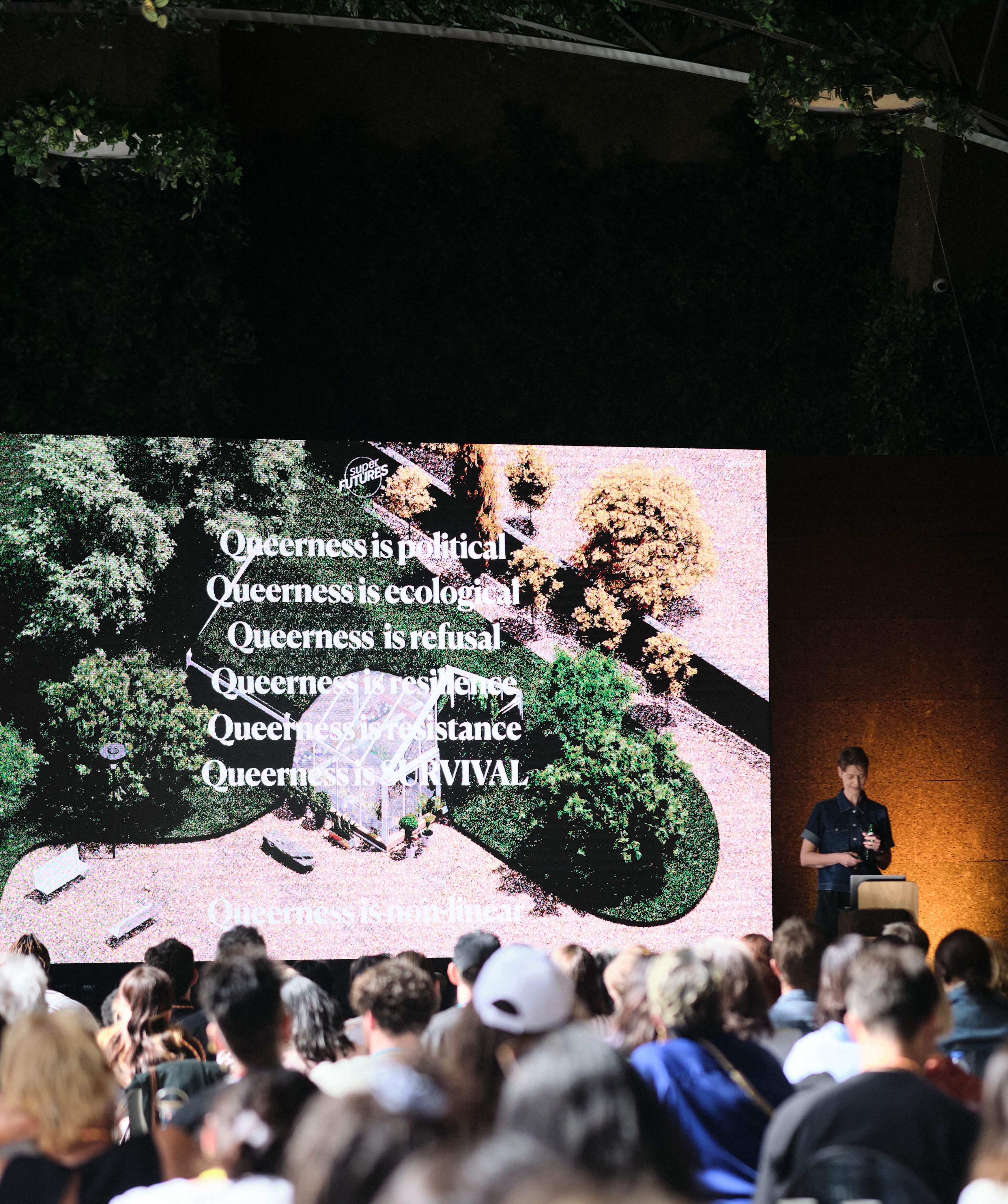
Queering can be a ‘tekhnē’ for interface cultivation, a skilled practice of working with the spaces between fixed categories

The generative aspect of queering offers a path through the tensions we've identified. Rather than choosing between access and experimentation, between wisdom and appropriation, between structure and fluidity, queering suggests we can enclose all these elements in creative tension, allowing new possibilities to emerge from their interaction.
The questions (and possibilities) multiply faster than the answers, revealing the leaky nature of knowledge.
How do we exist in between interfaces that can hold dynamically the whole spectrum from our dreams to our shadows?
Our tekhnē could be found right here, in the practice itself, in remembering that knowledge is being in relationship with the world.
● Accompanying emergence: Find a threshold in your daily environment - a doorway, a bridge, a change in terrain. Pause and notice what’s happening in this in between space. What sounds or movements belong to neither side? What would it mean to approach it from this threshold perspective - staying curious about what wants to emerge in the space between? Take one small action from this place of notknowing.
By Giovanna Noronha
As with most of the pieces written about futures and our collective fate, the exploration of this theme is biased. As none of us arrive neutral, this author brings her own background, skepticism of flattening narratives, longing for systems where people could speak and be heard without fear, and epistemological prisms with her. It is important to note that she comes from a country in Latin America, is a young queer white woman, with a considerable amount of privilege.
She is a Journalist and Marketer that believes in ancestral knowledge as the foundation to pave forward more equitable futures, having done immense research on Collective Intelligence and Ancestral Knowledge. I could also say she is a pessimist, but I’m not sure that any futurists are truly optimistic by nature. So, in this chapter, what follows is colored by bias, by awe, by critique, by the longing for something better. And this
disclaimer is important because it tells us about the lens with which we see the world, and our choices when framing apparent “objective truths”.
In a time of systemic unraveling and epistemic fatigue, transparency emerges not just as a tool but as a paradigm shift. This chapter explores the futures of radical transparency: a principle not of exposure for control, but of visibility for co-creation. It asks us to move past the legacy of hierarchical opacity and imagine systems that earn trust through shared agency, reciprocity, and accountability.
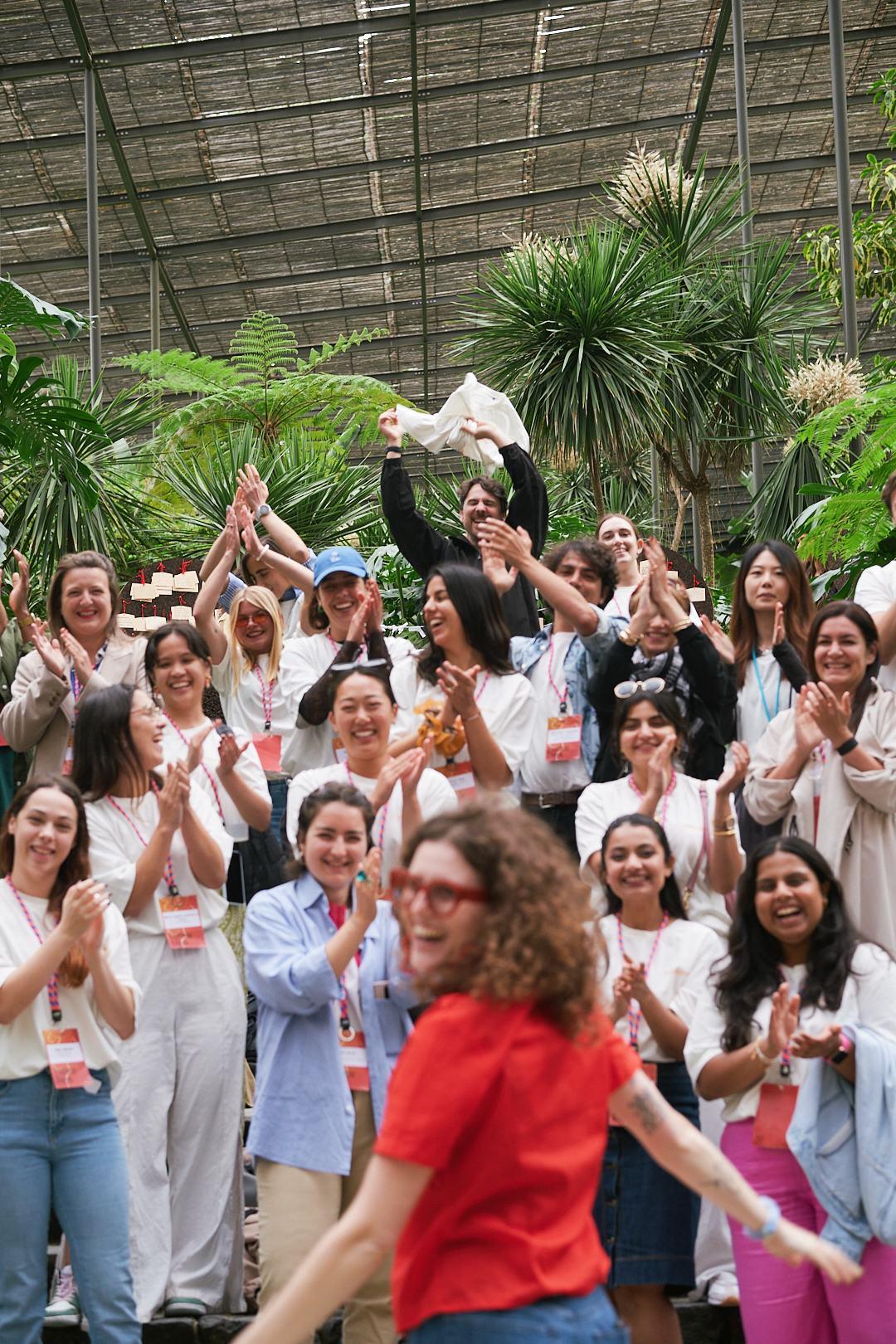
What if visibility,openness, and shared truth were not used as metrics for wokeness, or as pure ways for profitability, but the very soil from which collective action grows?
Our story began, like many things do at Future Days, with a question:
What if openness, visibility, and shared truth were not risks to be mitigated, but principles we built everything on? What if openness and transparency were not used as metrics, or as pure ways for profitability, but the very soil from which collective action grows?
That question lingered in the air like a tuning fork. We were asking what the world might look like if it served a shared foundation. Not just a lens, but a language. Not just a call for accountability, but a collective offering of trust. The principle of trusting until proven wrong, that cascades from micro to macro scales of action.
The thing is: transparency became a heavy word. It carries with it decades of techno-solutionism, surveillance regimes, and institutional gaslighting. A stark contrast from native peoples and first native peoples and first nations M.O., where it was taken simply as “the way most things were run”. The axis on which decisions were carried out, crops were harvested, the food was
rationed, hunting was done, and the people organized.
In a space among artists, futurists, technologists, and everyday thinkers, “being permissive to light” takes on new shapes. Organic. More alive. Almost maluable. As we looked at systems through the lens of radical transparency, it became clear that the real transformation wasn’t just in what we make visible, but how we relate to each other through that visibility.
It all (or most of it) starts with the traditional stance of design as authority, as orchestrator of outcomes, being challenged head-on. Instead of designing systems to control behavior or optimize efficiency, many participants suggested a shift toward co-authorship: processes that invite others in not after the fact, but from the start. This isn't about collaboration as a checkbox; it’s about embedding shared agency into systems. Coauthorship can be challenging because it means relinquishing the illusion of neutrality. It is not just about showing the work, but instead sharing the tools and decision-making behind it.



Whoever said that entropy in a system is a bad thing?
With visibility comes risk. Throughout the festival, there was an undeniable recurring tension between visibility and vulnerability. The sense that to open up a process, explain a perspective, or share your truth is also to expose it to misunderstanding and misappropriation. Transparency, then, cannot be thought of as a neutral good. It is relational, contextual, and sometimes dangerous. In systems where power is uneven, who gets to be transparent, and who pays the price for that visibility, matters deeply. Some speak of “strategic transparency” to protect the emotional and cultural labor embedded in the work, in other words, to “test-drive” the use of transparency by making it not an absolute, but a negotiated practice that comes accompanied by consent,


Despite discussing decentralization in structural terms within models of distributed governance, networked leadership, and cooperative platforms, what struck many of us was how distributive and interdependent systems feel like. It is positively different to be part of a space where decisions aren’t made for you, but with you. Where the flow of information is reciprocal, not top-down. Several voices spoke of a deep shift from centralized control to mutual trust, and how that shift, when real, can be felt viscerally. In decentralized systems, people experience a new kind of legitimacy: not given by credentials or titles, but earned through participation. The shift here isn’t just technical, it’s embodied and shared through culture. It’s the feeling of being seen as a contributor, not a consumer.
In turn, to contribute means we can’t pretend to have all the answers upfront. Instead of broadcasting pre-digested truths, we’re called to create conditions for collective sensemaking, in spaces where meaning is made in the open, through friction,
dialogue, and sometimes confusion.
There is something beautifully subversive in this: the idea that understanding doesn’t have to be efficient, and clarity doesn’t always come first. In actuality, this author realizes, transparency here doesn’t mean clarity, but context (a means to an end). It's the invitation to wrestle with complexity together, in public, without shame. In this kind of culture, transparency becomes less about control or consensus, and more about coherence in multiplicity.

Transparency isn’t also just about showing everything, it’s about facing what we’ve been trained to ignore. The silences. The edges. The truths that don’t fit neatly in dashboards or reports. The glitches. .
One thread took us back to basics. We explored what happens when design stops isolating and starts enabling co-authorship. Not just as a method, but as a worldview. What if the role of the

Transparency needs trust to thrive. Without trust, exposure becomes spectacle. Sohail Inayatullah pointed out that the pendulum between platform corporatism and platform cooperativism swings wide, but we still have to choose where we anchor it. Then naturally came the insistence: we must escape binaries. Simon Höher pushed us to design for what’s unthinkable. That collective bravado, the kind that persists and springs out in spite of its contexts (and gracefully dares to imagine radical new civilizational norths), needs
We all felt it during the festival; to open up a system is to let in contradiction. Transparency is disruptive. When you pull back the curtain, what you reveal isn’t always legible or even welcome.
One participant shared:
“We all have our back end, our behindthe-scenes... but not all steps are pretty and clear. Making them visible means making them also hard to understand and rejected by the audience, ultimately building distrust.”
Kasia Zaniewska, fd25 attendee and summary contributor
This is the paradox: if we want systems to be participatory, we must show their guts. Trust, then, doesn’t come from gloss, it comes from shared process. It means saying: the house is being renovated, but you’re invited in to sit at the table anyway.
Still, challenges remain: How can we imagine transparency when we’ve forgotten how to trust? This wasn’t just a rhetorical question; It was lived and tested by a community-in-motion.

The Fellows of the Young Future Makers, a fellowship program developed by Future Days and CIFS, in collaboration with Media Lab Bayern, dived right in: Poorvi used speculative design to ask what development might look like outside of colonial narratives. Nanditha guided us through a selfpaced literary journey into possible worlds. Brodie traced historical counterfutures for land use in the UK, anchoring the speculative in real soil.
These contributions remind us: transparency is not an individual practice. It’s a collective one. Built in small rituals. Built in disagreement. Built in art, policy, and pause.
These are (some of) the seeds we planted during the Festival:
● A recorded session of “Curiosity That Matters” challenged how we think about governance and infrastructure. Not as rigid systems, but as soft architectures for care.
● The Garden Gallery explorations and installations: an invitation to jog the senses beyond the Status Quo.
● The Knowledge Ecology open Miro board: part archive, part playground, part whispering field of insight.
**These aren’t roadmaps. They’re portals. They don’t offer certainty, but they point to directions to wander toward.
In its place, a new logic is emerging...
A logic that ecosystemic,is symbiotic, and decentralized by design. One transparencywhere is not weaponized, but rooted in reciprocity and collective authorship.
“If you want to go fast, go alone; If you want to go far, go together.”
Lex Fefegha
The story isn’t finished. It’s being told in drafts, out loud, in the open. And maybe that’s the idea that will change it all. And perhaps, if you indulge the author one more provocation, it is in this graceful disruption and community rebellion that we all can start to look ahead through a different lens.


We are living through a transition. A moment of unmaking, where many of the tools, systems, and beliefs that once served us no longer feel aligned. They feel brittle, extractive, or too rigid for the complexity of now. The dominant operating systems of growth, control, binaries, prediction, are no longer enough.
Whether through foresight, care, transparency, regeneration, queering, or rethinking governance, each theme echoes this shared insight: We are outgrowing the status quo. This discomfort isn’t a flaw. It’s a signal. A friction that reveals the outlines of something new wanting to take shape. Not all at once, not clearly, but slowly, relationally, emergently.
Some repeated patterns we noticed:
● Discomfort as compass
Each theme embraces uncertainty as not just necessary, but generative. Discomfort becomes the soil for transformation.
● From control to relation
Whether in governance, design, or foresight, there's a shift from managing outcomes to cultivating conditions, from linear intervention to ecosystemic coevolution.
● Multiplicity over singularity
Every theme rejects binary thinking in favor of plural, layered, and often contradictory futures. We are not looking for one truth, but many truths, held together.
● New roles and practices
The practitioner is no longer a planner or predictor, but a facilitator, a gardener, a questioner. Language, storytelling, embodied practice, and interface design are the new instruments of change.
● Critique with informed optimism
None of these chapters fall into naive utopianism. All are deeply critical of systems, of language, of even our own methods. But the critique is grounded in possibility, not cynicism.
We also held tensions:
● Trust and visibility
Transparency without care becomes exposure. But care without clarity risks exclusion. How do we balance them?
● Structure and fluidity
We desire more flexible systems, but some structures protect the most vulnerable. What do we preserve, and what do we redesign?
● Wisdom and appropriation
We look to ancestral knowledge, but how do we learn without extracting? How do we listen without colonizing?
Future Days 2025 became a kind of shared rehearsal space where we could feel these questions in our bodies, our processes, and our relationships. This year was less about “what we know now” and more about “how we are learning to know differently.”
As Youssef Kasdarli (FD25 attendee) wrote on social media:





“The visions shared here are not answers, they are invitations to question the defaults we’ve normalized”


We’re already working on the next chapter, and it starts with anchoring these questions in lived realities, in community labs, in co-created tools, in embodied methodologies. Not to close the cycle, but to deepen it.
We can’t wait to share what’s coming. But for now, we leave you with an invitation:
Keep tending to the in-between. Keep imagining futures that don’t fit.
Keep designing in ways that allow complexity, care, and contradiction to coexist.
And come back not to finish, but to continue.



We want to express our deepest gratitude to, not only everyone who contributed to this pages, but to all who participated and made Future Days possible, as this project wouldn’t exist without the effort and heart of everyone involved throughout the journey.
Authors
Meri Sahade, Irina Panovich, Giovanna Noronha, Elena Domenicucci and Paula Rydel.
Contributors
Nathalia Manso, Julia Barashkov, Kasia Zaniewska, Karolina Michalkowska, Greg Sherwin
Design
Catarina Rodrigues
Uri Casademont, Meri Sahade, António Araújo, Elena Domenicucci, Alessandro Ianello, Esther Grossman, Christina Bifano, Giovanna Noronha, Érika Perez, Gustavo Pehrsonn, Paula Rydel, Catarina Rodrigues, Patricia de la Osa, Ritika Agarwal, Jacopo Manganiello
To all facilitators:
Juliana Calli-Long, Marica Camila Echeverri Orejuela, Chris Wilson, Juli Groshaus, Mehek Khanna, Pierluigi Delgiudice, Inês Ramalhão Genesis Daquinan, Catalina Hepp, Julia Spiess, Annie Wu, Gül Onat, Daniela Lopes, Irene Verde, Felix Gerk, Ana Gazpio Iturburu, Kateryna Liashchenko, Trisha Mehta, Sanyukta Ranjit Mathure, Carrie Puyuan Yang, Thais Andrade, Pedro Silva , Isabel Serval, Suzie Agustin.
To the volunteers:
Alejandro Seva, Bianca Alexandra Muresan, Debora Zamd, Emma Aiyin Chen, Fiona Con, Herizo Robin, Iana Prakheeva, Karina Strange, Maria de Fátima Antunes Soares, Marta Rebelo Estiveira, Marta Sofia Cavaleiro Rodrigues, Pablo Costa, Pietro Cavalcanti Parada, Raluca Mitran, Shruti, Nilesh Dange, Tara Kaufmann, Vaishali Odedra, Davianna Diaz, Clara Otalvaro
To, once again, the moderator of this edition: Paula Cardoso
To all ambassadors:
Stef Silva, Greg Sherwin, Paqui Lizana, Tobias Revell, Helen Job, Tiago Forjaz, Amiyra Perkins
And to the incredible photographers: Angel Bambu, Felipe Paladini, Ly Takai, Luce Carlotta
supported by associated partners


In an era defined by complexity and uncertainty, we exist to ask better questions, build more relational tools, and design futures that are not only possible but desirable. imagine what’s next, we prototype → Follow us on social media: (Linkedin) Future Days –(Instagram) @futuredays.io → Or contact us directly: hello@futuredays.io


